

The nation’s #1 public school network is located here in Arizona! With more than 20 campuses across the state, BASIS Charter Schools are inspiring Arizona students to achieve at globally competitive levels.





The nation’s #1 public school network is located here in Arizona! With more than 20 campuses across the state, BASIS Charter Schools are inspiring Arizona students to achieve at globally competitive levels.


AS SOMEONE WHO just spent the last 10 weeks or so dealing with constant fatigue, surging hormones, nausea and food aversions, and slightly painful twinges as my uterus expands…I’m no stranger to the hardships of pregnancy. Bloodwork, lots of supplements, a subchorionic hemorrhage, eating healthy when you just want ice cream (all for my pants to not fit anyways), and lots of worrying. It doesn’t seem to get easier with each baby. With four rowdy boys already there’s also no time to rest. And to top it off—I had to cut back on caffeine! Seems cruel if you ask me.
Baby boy #5 (yep, what are the odds?!) is due June 1st and we couldn’t be more thrilled to add another little one to the Raising Arizona Kids’ family. There’s a lot to digest when you’re pregnant, so we’ve made sure to include some great resources for you fellow parents-to-be— whether it’s your first…or fifth!
From favorite prenatals, nausea relief, belly butter, pillows, and even underwear—I’ve rounded up my favorite must-have pregnancy items and curated amazing content from local experts. If you’re a first-time parent, we have a great piece about adjusting emotionally and mentally, understanding baby milestones, and we’ve even debunked some common pregnancy myths.
If you’re building that baby registry for friends and families to see, we have all the top ‘must have’ items for bringing that bundle of joy home.
Postpartum can be difficult to navigate so we have some great post-baby items to help ease the transition to motherhood - ways to

pelvic floor health tips (no…you’re NOT supposed to pee when you sneeze!), and everything you need to know about maternity leave.
For the dads—let’s not discount your significant role in pregnancy and postpartum. We have a great ‘Dad Talk’ section with helpful tips and articles to ease your way into fatherhood including first-time father tips, postpartum depression in men, and all about ‘dad brain’. But, if your family is done expanding and you’ve decided on a vasectomy, we’ve got you covered there, too.
January 1 is just around the corner so if you’re ready for something new, try our 52 Week Saving Challenge to kick-start your 2025 finances. Or check out our ‘24 Things to Reflect on in 2024’ before that clock strikes midnight. Make sure to add your own reflections and goals!
Whether you’re spending your winter
trying to conceive, growing a human (or more!), or treading postpartum waters, I hope all the well-rounded resources we’re collected will help you on your journey. I’m wishing you a wonderful holiday season filled with family, warmth, and lots of fun memory-making activities. In-between decorating gingerbread cookies, playing in the snow, and chasing a bunch of kids, you’ll find me curled up on the couch with a warm blanket, my Wildbird Pregnancy Pillow, and a delicious mocktail!
Kate Reed, Publisher
Do you have a topic you would love us to write about?
Email publisher@rakmagazine.com
• 25 Oral Health and Your Kids
• 26 Tips for Making Dentist Visits Less Stressful
• 26 Oral Health and Children with Special Needs
• 26 Delta Dental of Arizona Announces Additional Special Health Care Needs Benefit
• 28 Why Mouthguards Matter
• 29 Boost Your Child's Performance Through Vision Skills
• 29 Color Blindness in Children
• 30 A Guide to Dental and Vision Insurance for Infants & Children
• 32 Diabetes and Your Child’s Oral and Eye Health
• 33 Vision Screenings and Eye Exams
• 35 Things I’ll Do Differently with My Second Baby
• 36 Pregnancy & Postpartum Must-Haves
• 40 Debunking Common Pregnancy Myths
• 42 Opening Your Heart and Home: How to Foster and Adopt
• 43 Health Tips for When Trying to Conceive
• 44 An Intentional Date Night Idea for Expecting Parents
• 46 What to Expect (From Your Pet) When Expecting
• 48 A Tiny & Mighty Trio
• 50 Understanding Baby Milestones
• 51 Traveling Made Easy with Rents-4-Baby
• 52 Baby Wearing: A Guide to Types & Uses
• 54 Staff Favorites: Top Baby Products
• 57 Supporting Small Businesses
• 58 Mommy Mingle: A Co-working Space for Moms & Babies
• 60 Postpartum Healing & the Benefits of Belly Binding
• 62 Adjusting Emotionally and Mentally as a First-Time Mom
• 63 Secrets of Sensitive Parenting
• 64 Postpartum Pelvic Floor Health
• 65 Rebalancing Hormones after a Pregnancy
• 66 Sleep Hygiene Tips for Busy Parents
• 67 Taking Time Off After a Baby



1 Dialogue: The More, the Merrier
4 Books:
• 4 Books Ties That Bind
• 6 Books for Parents
8 Education: Gifted, Mainstream, & Montessori 3 Kindergarten Program Options at San Tan Charter School
10 Teens:
• 10 How to Have ‘The Talk’ about Safe Sex
• 12 Resume Tips & Tricks for High School Students
• 14 Help Your Teen Adjust to a New Baby in the Family
• 16 Talking to Your Teen about Addiction
18 Grandparents: The Do’s and Don’ts of Being a First Time Grandparent
20 Holidays:
• 20 Kickstart Your 2025 Savings with the 52 Weeks Money Challenge
• 22 Things to Reflect on in 2024
68 Dad Talk:
• 68 Advice I’d Go Back and Tell Myself as a First Time Dad
• 69 How Dads Can Help After the Arrival of a New Baby
• 70 Dad Brain is Real
• 71 Vasectomies 101
• 72 Dads of Great Students
• 74 Navigating Postpartum Depression in Fathers
• 76 Daddy Doula: Educating Dads to be Interactive Birth Partners
Winter 2024: Dec • Jan •Feb Vol 35: No 4
PUBLISHER
Kate Reed
EDITOR
Monique Seleen
CONTRIBUTORS
Haley Carr • Roy DuPrez • Dr. Erin Ellis • Veronica Frash
Rachel Galvez • Sidney Garcia • Michael Klinkner • Linda Levin
Sean McClintock • Princess Estocia McKinney-Kirk • Ben Mills
Dr. Gina Montion • Dr. Ronald Ruff
Chris Seleen • Thomas Silva • Kim Vehon • Kimberly Vermillion
Banner Health • Delta Dental • Delta Vision • ElevateEdAZ
Maricopa County Library District
San Tan Charter School
Willow Midwife Centers for Birth & Wellness AZ
ART DIRECTOR
Michèlle-Renée Adams
COVER PHOTOGRAPHY
Melissa Fritzsche Photography
MARKETING CONSULTANT Tina Gerami-Bynum
Raising Arizona Kids magazine (ISSN 1051-4295) was created to connect Valley families to local resources and share real-life stories about the challenges and joys of raising children. Copy right © 2024 by Raising Arizona Kids , Inc. All rights reserved. Reproduction in whole or part without written permission is prohibited. Content guide lines are available at raisingarizonakids.com


@RAKmagazine on Twitter; RaisingArizonaKids on Facebook, Instagram and Linkedin; RAKmagazine Pinterest and Youtube.
CONTACT US editorial@RAKmagazine.com • familytime@RAKmagazine.com advertising@RAKmagazine.com • subscriptions@RAKmagazine.com 932 South Hunters Run, Show Low, AZ 85901 480–991–KIDS (5437) • raisingarizonakids.com IN PARTNERSHIP WITH

By Maricopa County Library District
Family is a tapestry woven from shared experiences, love, and sometimes a bit of chaos! Whether it’s the laughter of a family gathering, the heartache of a difficult goodbye, or the warmth of cherished traditions, stories about family capture the essence of our connections. From heartwarming tales to thought-provoking stories, these reads offer a glimpse into the unique and universal aspects of family that resonate with us all.
Handpicked by librarians from across Maricopa County Library District, grab a cozy blanket and dive into these memorable stories that remind us why family matters. Looking for more? Check out all your county library has to offer at mcldaz.org
Saturday by Oge Mora
Join a mother and daughter on a Saturday full of ups and downs that ultimately reminds them that the thing that matters most is spending time together.
Why You’ll Love it: We’ve all experienced a day where plans just don’t work out the way they’re supposed to–this book is a tender reminder that while things may try to stop us from having a good day, what matters most is getting to spend time with the people we love. There are also great strategies throughout for talking with little ones about how to keep our cool when we’re feeling disappointed! -Caroline L., Library Paraprofessional
Twinkle, Twinkle, Winter Night by Megan Litwin
A play on the traditional nursery rhyme, this story follows multiple families of one small town as they prepare for winter holidays. Highlighting how winter nights are warmed by diverse seasonal lighting traditions, the bustling little town adorns its streets with a parade of cultural illuminations, under which everyone feels at home.
Why You’ll Love it: Litwin’s gorgeous, easy-to-sing rhyming text is perfect for reading aloud with children, featuring bouncy alliteration, evocative imagery, and a curated collection of vocabulary that will spark imagination. Pages dazzle with bold, cartoony illustrations that emphasize the beautiful diversity of the holiday season, and how differences are brought together through the magic of holiday cheer. -Sally C., Librarian







Sugar in Milk by Thrity Umrigar
Set against a snowy cityscape mirroring the chilly inner world of the story’s main character, this book examines the feelings of isolation and otherness a young girl faces after leaving most of her family behind to move to America. Our lonely heroine sinks into the role of outsider, until her aunt invites her on a walk through the city where she relays a story of Persians emigrating to India, a story that encourages our heroine to regard her American surroundings with acceptance and warmth.
Why You’ll Love it: This is a perfect wintertime tale of cherishing past chapters while welcoming new beginnings that echoes the season’s shift from winter to spring. Umrigar’s story expertly captures the challenge of change while featuring artwork ornamented by uniquely Persian patterns and iconography. This sweet story is a reminder that there is room for acceptance, much like there is always room for sugar in milk. -Sally C., Librarian
Grandpas are the Greatest by Ben Faulks and Nia Tudor Grandpas of all kinds are celebrated in this book. Each page spotlights a very different type of Grandpa but in the end one thing ties them all together: they all love their grandchildren and they love to pass along their skills to the next generation.
Why You’ll Love it: This book is a celebration of a grandpa’s expertise gained through experience and his joy in sharing what he has learned while spending time with his grandchild. -Kim L., Librarian






Gigi and Ojiji by Melissa Iwai Gigi is excited to meet her grandfather, Ojiji, and has all kinds of fun activities planned for when he arrives from Japan. However, when Ojiji arrives things don’t go the way Gigi anticipates.
Why You’ll Love it: This award-winning beginning reader shows how love and understanding can help bridge cultural differences. If you love this first book, there are also more books to explore in the series including Gigi and Ojiji: What's in a Name? and Gigi and Ojiji: Food for Thought. -Amy C., Collection Development
Gone Fishing: A novel in Verse by Tamera Will Wissinger Sam is looking forward to a fishing trip with his dad but at the last minute, his sister Lucy is invited to tag along. While Lucy has her best day ever, Sam struggles with resentment.
Why You’ll Love it: This story is told using verse, which keeps the story lively and entertaining. The succinct text is also helpful to emergent readers while the plot will keeps them engaged and reading. Navigating family relationships and learning flexibility can be hard skills to master, but as Sam demonstrates, disappointments don’t have to ruin your day. -Kim L., Librarian
Applesauce Weather by Helen Frost
When the first apple falls from a tree, Faith and Peter know its applesauce weather and time for stories from their Uncle Arthur. But, this is the first applesauce weather without Aunt Lucy, and the twinkle in Uncle Arthur’s eye has dimmed. Faith is sure she can help Uncle Arthur find that twinkle again—and learn the real story behind his missing finger!
Why You’ll Love it: This is a touching novel-in-verse about loss and coping with grief, family, and the importance of storytelling among generations. The format is great for reluctant readers, but anyone who loves the way a story is created and passed down will enjoy this! -Caroline L., Library Paraprofessional
Finding Orion by John David Anderson
Orion Kwirk just found out through a singing-clown telegram that his Grandpa Kwirk, his father’s father they only see once a year, has died. After attending the funeral, Orion and his family find themselves on a crazy adventure of discovering what type of man he truly was to those around him.
Why You’ll Love It: This a great family story that helps young people understand there are many sides to each person’s life. What you see and believe to be true about someone is not always the case if you just dig a little deeper, have some conversations, and learn about forgiveness and acceptance. -Kristine R., Librarian
The Inheritance Games by Jennifer Lynn Barnes
One night, seventeen-year-old Avery Grambs is living in her car to escape her sister's abusive relationship. The next night, she becomes a billionaire after the reading of a will. The catch? She must live in Hawthorne House for a year with the Hawthorne family. Unfortunately, the family vehemently opposes a stranger inheriting their fortune, leaving Avery in a web of distrust as mysterious clues emerge, suggesting that she may be more connected to the family than she ever imagined.
Why You’ll Love it: The various characters in this book are intriguing and keep the reader guessing throughout the book on who should be trusted. The twist at the end is great and entices the reader to continue along with the characters into the next story in the series. -Kristine R., Librarian
Every Heart a Doorway by Seanan McGuire
Sometimes your family becomes people that you choose instead of people you are born to. This is the case at Eleanor West’s Home for Wayward Children, where an eclectic group of teens find family in each other and their unique experience of tumbling into magical lands, but then returning lost and confused. Nancy is changed and needs help adjusting when darkness and tragedy strikes at her hew home. It’s up to Nancy and her new-found schoolmates to get to the heart of the matter.
Why You’ll Love it: The first in the Wayward Children series of fantastical worlds and unique characters, each told in quick, short books. This is not a traditional family story, but a series that shows the strength of bonds in found families and shared experiences. -Lindsey P., Librarian

By Elizabeth Earnshaw • Synopsis from publisher
WHAT IF THE problem isn’t your partner—it’s stress? This relatable and empowering guide offers indispensable tools to stress-proof your relationship. With warmth and humor, Elizabeth shares research-backed practices to help you detect signs of overwhelm and take proactive measures to protect, refresh, and heal yourselves. Over the course of the book, you’ll learn how to:
• Set effective boundaries
• Self-soothe and self-regulate when life gets rough
• Take responsibility for what makes you happy
• Communicate with compassion rather than resentment
• Identify and cope with what’s in your control… and what’s not
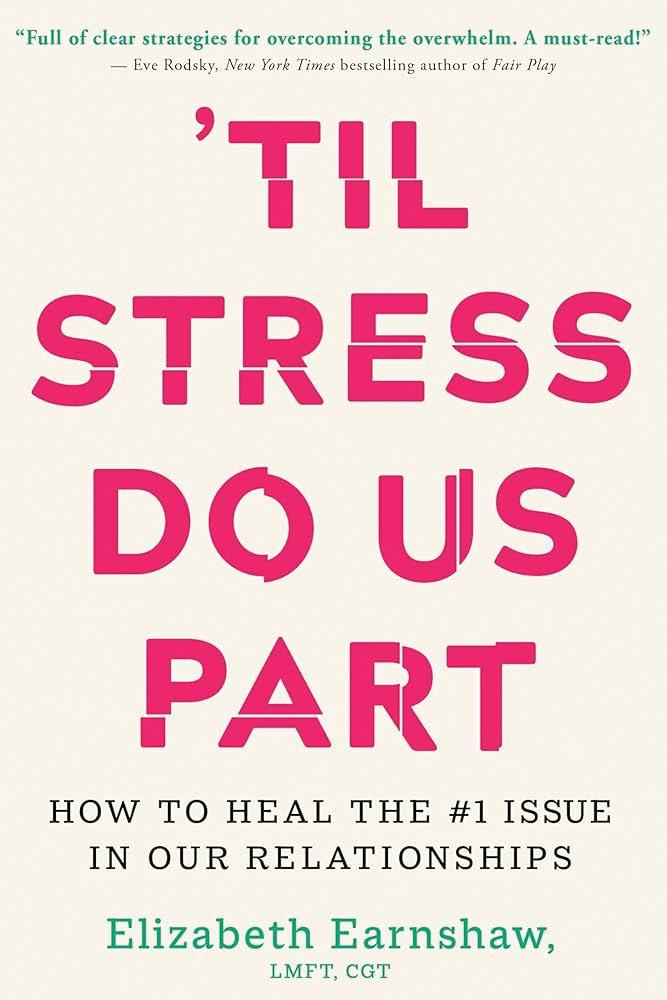
• Reduce conflict and find more connection in your relationship
By Steve Magness • Synopsis from publisher
IN DO HARD Things, Steve Magness, a performance scientist who coaches Olympic athletes, teaches us how to work with your body – how experiencing discomfort, leaning in, paying attention, and creating space to take thoughtful action can be the true indications of cultivating inner strength. He offers four core pillars to cultivate such resilience:
• Pillar 1- Ditch the Façade, Embrace Reality
• Pillar 2- Listen to Your Body
• Pillar 3- Respond, Instead of React
• Pillar 4- Transcend Discomfort
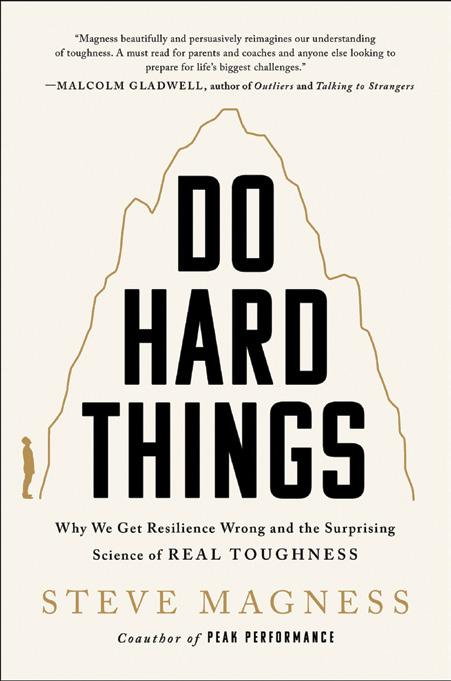
Smart and wise all at once, Magness flips the script on what it means to be resilient. Drawing from mindfulness, military case studies, sports psychology, neuroscience, psychology, and philosophy, he provides a roadmap for navigating life’s challenges and achieving high performance that makes us happier, more successful, and, ultimately, better people.
By Kendra Adachi Synopsis from publisher
WHAT IF YOU want to simply live your life without chasing productivity at every turn? Is there a way to manage your time without being at its mercy?
Absolutely, and The Plan will show you how. Using the memorable acronym PLAN, you will learn to prepare, live, adjust, and notice like a Lazy Genius, all through the lens of what matters to you in your current season. In the book you’ll:

• Discover two beliefs that will change your time management forever
• Integrate your hormones, personality, and life stage into your planning process
• Use the Lighten the Load framework to get your stuff done
• Experience freedom from the crushing pressure of greatness, potential, and hustle
• Live wholeheartedly today
Refreshingly compassionate and immediately practical, The PLAN is what you’ve been waiting for.




By San Tan Charter School
AT SAN TAN CHARTER SCHOOL, we know that each child’s early learning journey is unique. That’s why we offer three distinct Kindergarten options to meet the varied needs of our families and their children: gifted, mainstream, and Montessori programs. San Tan’s tuition-free half-day and tuition-based full-day programs are designed to provide children with a nurturing, engaging environment that promotes both academic growth and social-emotional development.
Parents can expect more than just traditional classroom experiences. Our full-day program incorporates daily physical education and either art or music, providing a well-rounded experience that fosters creativity, movement, and selfexpression. For families looking for a balanced approach, our mainstream and gifted classrooms integrate Montessori elements such as flexible seating and small group instruction, helping children explore and learn at their own pace. Light technology use and the inclusion of workbooks ensure our young learners are developing essential fine motor skills, giving them a solid foundation without over-reliance on screens.
We understand that an early, supportive environment is crucial for lifelong success. That’s why social-emotional learning is a part of every week, helping students build confidence, empathy, and adaptability as they transition into a school setting. Each classroom experience at San Tan is tailored to support both academic growth and emotional well-being, addressing concerns many parents have expressed over high student-to-teacher ratios and a lack of individualized attention in traditional public schools.
If you’re looking for a Kindergarten program that respects your child’s individual needs while laying the groundwork for a joyful learning experience, come explore the options at the recently rated ‘A school’ by the Arizona Department of Education - San Tan Charter School.
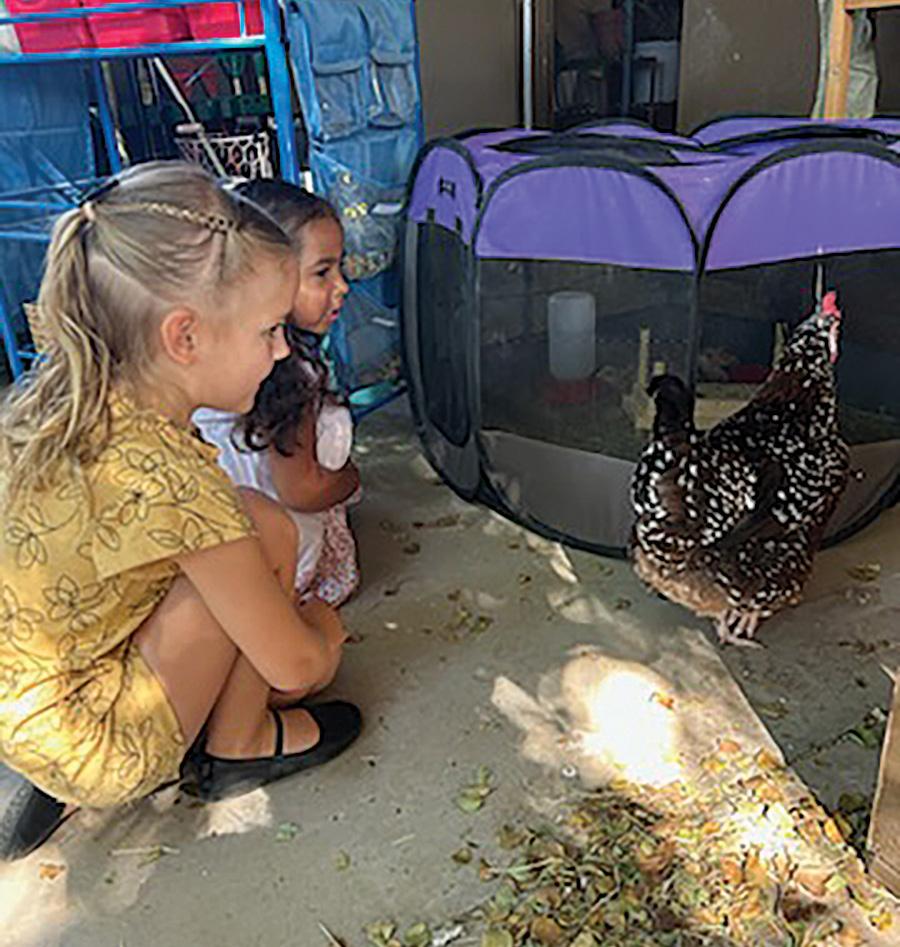
San Tan Charter School is hosting two Rising Kindergarten Meet & Greets for families who are interested in learning more about Kindergarten.
• WINTER: January 31, 2025 (9:30 — 10:30 a.m.)
• SPRING: March 28, 2025 (9:30 — 10:30 a.m.)
Both Meet & Greets will be held on the Preschool playground, and kindergarten teachers, school administrators, and other families will be there to mix and mingle.
Call to RSVP. Interested parents can also schedule a tour through our website or call directly at (480) 222-0811.
Come find out what San Tan is all about!
By Monique Seleen


•







AS A PARENT, talking to your teen about sex can feel uncomfortable, but it’s one of the most important conversations you’ll ever have.
Here’s a guide on why it’s important, how and when to approach the subject, and the safe sex recommendations you should share with your teen:
Why it’s important to talk about sex with your teen
Teens are constantly exposed to information about sex – through media, friends and online sources. Unfortunately, much of this information can be inaccurate or misleading. As a parent, your role is to provide clear, reliable and accurate guidance on the subject.
Talking to your teen about sex allows you to address not only the physical aspects but also the emotional and relational components.
How and when to approach the subject
The timing of “the talk” is crucial. While many parents wait until their teens show signs of interest in dating or relationships, it’s better to start the conversation earlier.
By the time they reach their teenage years, sex should already be an ongoing discussion, rather than a one-time, awkward conversation.
By Michael Klinkner
If you’re unsure where to start, ask your teen what they already know and build the conversation from there. Don’t overwhelm them with too much information at once – break the conversation into smaller, manageable talks over time.
Safe Sex Recommendations for Teens
When talking about safe sex, it’s important to discuss both abstinence and protection. While abstinence is the only 100% effective way to avoid pregnancy and STIs, teens should also understand how to protect themselves if they decide to become sexually active.
Here are some key recommendations for safe sex:
• Condoms: Stress the importance of using condoms every time they have sex. Condoms are highly effective in preventing both pregnancy and STIs when used correctly. Demonstrate how to use them properly or provide resources where they can learn.
• Birth control: Talk about various birth control options and let them know that birth control helps prevent pregnancy but does not protect against STIs, making condoms essential even when using other forms of contraception.
• STI testing: Encourage regular STI testing if they are sexually active. Many STIs do not have visible symptoms, so it’s important to get tested to ensure their health and the health of their partner.
• Consent and communication: Teach your teen about the importance of mutual consent in any sexual encounter. Discuss the need for open communication with partners.
Having “the talk” with your teen about safe sex is essential for their overall well-being. By discussing sex early and often, you can provide the guidance they need to make informed and safe choices. Ultimately, your support and guidance will help your child navigate relationships and sexual health responsibly.
Michael Klinkner is a Licensed Clinical Social Worker with more than 25 years of experience working with parenting, child and teen issues. His expertise includes behavioral problems, ADHD, anxiety, depression and trauma. Klinkner provides individual, group and family therapy to children, adolescents and adults through virtual or in-person sessions at his office located at 3235 N. Washington St., Suite 107 in Chandler, Ariz. 85225. The office has night and weekend hours to accommodate busy schedules. For more information, visit klinknercounseling.com





By ElevateEdAZ


WHETHER YOUR TEEN is applying for a job, gearing up for internships, or getting ready to send off college applications, a polished resume is a must have.
Below are some resume tips for teens put together by ElevateEdAZ - an initiative of the Greater Phoenix Chamber Foundation that prepares individuals for college and careers:
1. Start with a Strong Format: Choose a clean, professional layout and list experiences in reverse chronological order. Use headings, bullet points, and consistent fonts to enhance readability. Use black font only and pick an easy font like (Arial, Calibri, or Helvetica). Consider utilizing templates available through platforms like Canva or Google Docs.
2 . Tailor Your Content: Customize your resume for each position you apply for. Highlight relevant coursework, projects, and skills that align with the job description. Use keywords from the job listing to improve your chances of passing through an Applicant Tracking System (ATS).
3. Highlight Education and Skills: For students, education is key. List the school’s name, expected graduation date, and GPA. List any awards or scholarships received, and
any relevant coursework or projects related to the job.
4 . Showcase Experience: Include internships, part-time jobs, volunteer work, and relevant projects. Use action verbs to describe responsibilities and achievements.
5. Incorporate Extracurricular Activities: Highlight leadership roles, clubs, sports or organizations that demonstrate skills and interests. This shows initiative and a well-rounded character. Focus on experiences that illustrate teamwork, problem-solving, and leadership.
6. Keep It Concise: Ideally, resumes should be one page. Be selective about what to include and avoid unnecessary details. Eliminate fluff and focus on what truly matters. Save it as a PDF, so it’s easy to email or upload.
7. Proofread and Edit: Spelling and grammar mistakes can create a poor impression. Always proofread the resume multiple times. Consider asking a friend, mentor, or career services for feedback.
8. Add a Professional Summary (Optional): A brief professional summary at
the top can provide context about aspirations and key qualifications. This is written in third person and should have a personal tone.
9. Update Regularly: Resumes should be updated regularly, especially after completing projects, gaining new skills, or taking on new roles.
10. Leverage Online Resources: Utilize online tools and resources, such as LinkedIn, to research industry standards and see how peers present their experiences.
A strong resume is an investment in your teen's future. By following these tips, you can help your teen create a compelling resume that stands out.
Launched in 2020, ElevateEdAZ, an initiative of the Greater Phoenix Chamber Foundation, prepares individuals for college and career through stronger alignment between education, business, and the community. ElevateEdAZ is focused on increasing the number of students completing high-quality education to workforce learning pathways that align with the needs of industry and supports students in completing industry-recognized credentials, attaining early post-secondary credit, and participating in capstone work-based learning experiences, such as internships and job shadows. For more information, visit elevateedaz.com


By Michael Klinkner

WELCOMING A NEW baby into the family is an exciting and life-changing experience, but it can also bring challenges, especially if you have a teenager. Teens are often undergoing their own significant developmental changes, so they may experience a range of emotions as they adjust to the idea of a new sibling.
Here are some tips to help your teen adjust and feel valued during this major family transition:
Your teen’s reaction to the news of a new sibling can vary greatly depending on their personality, age, and life circumstances. Some teens may feel excited about becoming an older sibling, while others might feel indifferent or upset.
It’s important to acknowledge and validate your teen’s emotions. Let them know it’s okay to feel uncertain or even jealous and that these feelings are normal. Open a dialogue early and ask how they feel about the new baby. Check in regularly without pushing them to share if they aren’t ready. The key is to provide a safe space for older children to express their concerns and feel they are being heard.
your teen during pregnancy and in the newborn days
Getting your teen involved during the pregnancy and the newborn phase can help them feel a sense of responsibility and importance in the family. Involvement can look different based on your teen’s interests. For instance, you might ask them to help choose baby items, decorate the nursery, or attend ultrasound appointments
After the baby is born, you can include your teen in age-appropriate tasks like holding the baby, reading to the baby, or helping with diaper changes and feedings.
However, it’s important not to overload older siblings with responsibilities that feel more like chores than meaningful engagement.
Showing support for your teen’s life after baby’s arrival
Once the baby arrives, your household’s focus will naturally shift to the newborn. Even during this busy time, it’s crucial to understand your teen’s needs and interests, too. Try to spend one-on-one time with them, even if it’s just a quick coffee outing or chat during car rides.
Reassure them their activities, whether it’s school, sports or friendships, remain just as important to you as they were before the baby’s arrival.
Recognize and celebrate their achievements, such as good grades or successes in extracurricular activities. These gestures demonstrate your devotion to them as individuals and not just in their new role as an older sibling.
Welcoming a new baby into the family is a big adjustment for everyone – especially teens. By understanding how they might feel, involving them in the process and continuing to support their life and interests, you can help ease the transition and strengthen family bonds.
Michael Klinkner is a Licensed Clinical Social Worker with more than 25 years of experience working with parenting, child and teen issues. His expertise includes behavioral problems, ADHD, anxiety, depression and trauma. Klinkner provides individual, group and family therapy to children, adolescents and adults through virtual or in-person sessions at his office located at 3235 N. Washington St., Suite 107 in Chandler, Az. 85225. The office has night and weekend hours to accommodate busy schedules. For more information, visit klinknercounseling.com




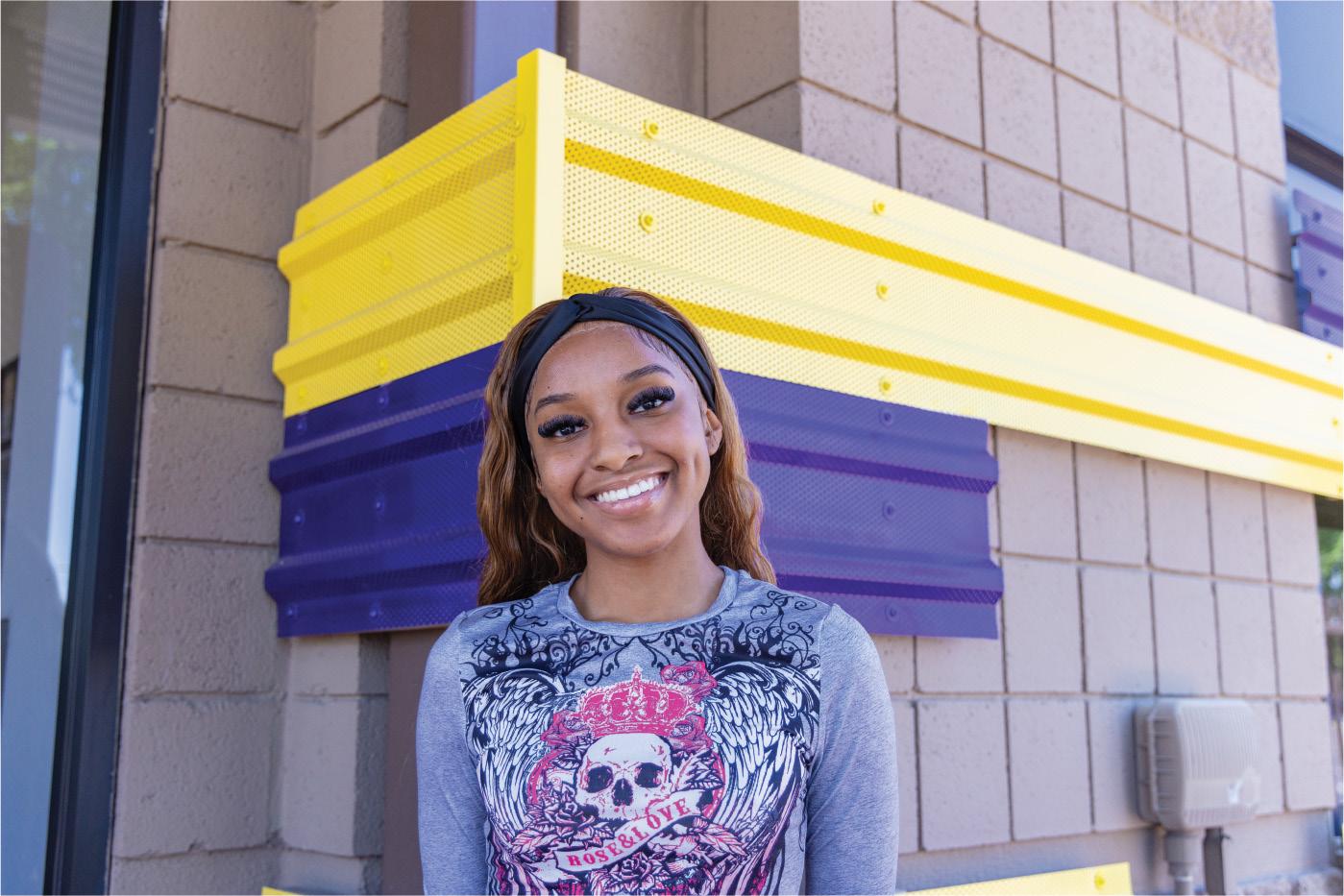


By Roy DuPrez
AS OUR KIDS get older, our worries as parents get bigger. Your kids’ teenage years are formative years for growth, but it is also a time in their life when consequences for making mistakes become more significant and bad habits begin to solidify into adulthood. Many teenagers know someone in their life who is struggling with substance abuse, or they are curious about the substances themselves. Parents can’t shy away from this conversation because it is something teenagers are dealing directly with. Here are two important tips on how to have a productive conversation with your teen about drugs and addiction.
The most significant barrier to speaking with teens about drug and alcohol abuse is the filter in which we see our children. We wear rose-colored glasses when talking to our kids, so conversations about addiction are ignored because we don’t want to believe that substance use could happen to our kids. This bias means we either don’t have the conversation at all or we approach it from a very shallow “don’t drink or do drugs” perspective. I recommend that you speak with or read up on the stories of a variety of people dealing with substance use issues. Share those stories with your teen so they can see how addiction affects teens and young adults of every background.
Foster honest dialogue and embrace questions
Transparency is everything when it comes to having an honest discussion about addiction. Your teen will have questions. You must give them space to ask those questions, and you should answer them. Be honest about your past experiences with drugs and alcohol as an adult and as a teenager. If you, a friend or family member, have ever dealt with substance use issues, share how that experience affected you. Teens discuss this stuff with their friends and see it in media frequently, so you want your kid to feel like they can come to you if they become curious about drugs and alcohol. You don’t want that curiosity to turn into active use, so make yourself a safe space for discussion.
Talking about addiction can be a tough experience for both you and your teen, but it is an important conversation to have. Breaking the stigma of addiction requires you to have honest conversations with your teen.
Go into the conversation understanding that substance abuse can affect anyone, be open about your experiences, and most importantly, be willing to answer questions. Tough conversations require creating a judgment-free space for teens to talk to their parents. This conversation may be challenging, but it pays off long-term. A teen who has a support system to ask questions about addiction is less likely to fall victim to it.
Roy DuPrez is the CEO and Founder of Back2Basics Outdoor Adventure Recovery, a residential drug and alcohol addiction treatment program in Flagstaff, Arizona. B2B is a nationally accredited and licensed addiction and recovery outdoor adventure program.


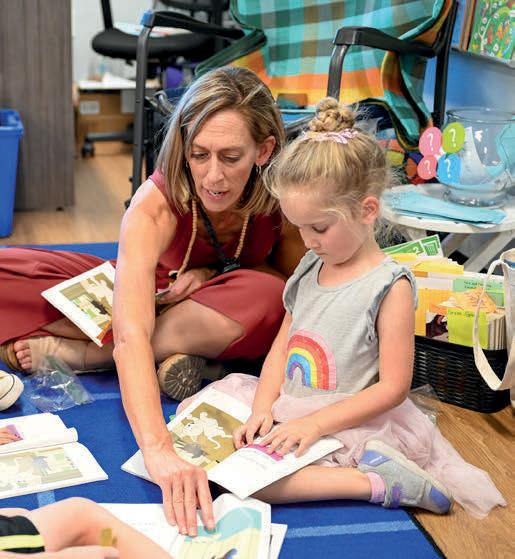
Enroll in SUSD’s full-day kindergarten to provide your child with a nurturing and enriching environment that fosters lifelong learning. With comprehensive academic programs, arts, athletics, and specialized support, SUSD positions students for success from the start. #GrowWithsUSd
REASONS TO CHOOSE SUSD FOR YOUR CHILD: Open the door to your child’s bright future with SUSD!
Full-Day Kindergarten: Provides a strong foundation for lifelong learning, offering more time for in-depth instruction and hands-on activities
Gifted Programs: Tailored to challenge and engage advanced learners, nurturing their potential and encouraging intellectual growth
Special Education Services: Individualized support to meet the unique needs of each child, ensuring every student can thrive
Dual Language Opportunities: Immersive programs that promote bilingualism, enhancing cognitive abilities and cultural understanding




By Linda Levin

THERE IS GREAT excitement, anxiety, and wonderful new opportunities in becoming a first-time grandparent. If it is your daughter/ daughter-in-law, try to be there for their concerns in carrying a baby. Try not to share stories that will frighten them about your experiences or family/friends’ birthing experiences.
Ask the couple “How can I be there for you?” If the delivery of the birth is personal, do not impose your need to be in the delivery room with them; only join if you are asked. Refrain from telling anyone the news without
explicit permission, usually up until about the three-month range.
Once the baby arrives, remember that each mother experiences postpartum symptoms differently, so try to be very supportive.
Here are some additional suggestions to think about:
• Remember, you are not the parent, you are the grandparent. Keep a healthy, nonjudgmental, and smooth relationship with your children.
• Ask if they want items for the baby’s room, and let them choose, ensuring that you’re focusing on them.
• Ask if they are interested in wanting a baby shower; then where, when, and what kind of baby shower they would like to have. Also ensure it is affordable for everyone.
• Do not have expectations of the baby, since each baby may have a different temperament – there are easygoing, shy, difficult, or combinations of babies’ temperaments.
• Do not come over unless you are asked to. Don’t knock at their door unexpectedly. Instead, call and ask if they need help with the baby, cleaning their home, or making a meal. Your children should not be waiting on you. Allow them family time to bond in whatever ways they need.
• Don’t forget to take a CPR, First-Aid Infant/ Child course. You may want to look into other classes that teach basic baby skills.
• Follow their lead or the rules of their home.
• Do not give advice, or tell them what to do, or how to do things that you did years ago. Make sure they have asked for your advice before you give it.
• Do not compare yourself or discuss parenting skills to your daughter/daughterin-law. You need to be respectful of how they want to parent.
• Soothing your new grand baby may be very challenging. You can try: Rocking the baby in a rocking chair, holding or singing to the baby, learning to properly swaddle the baby, if you’re comfortable, do skin to skin connection, take them out into nature, or get permission to drive them around the block in their car seat.
• Let bonding happen naturally or organically.
This may be an emotional and reflective time in your life. You are observing your baby having a baby. Allow yourself to think about what your life was like when you gave birth. This may help you to be more empathic to your child, who is going through this for the first time.
Linda Levin has a dual master's degree in education and psychology. She is married and a mother of two daughters and five grandchildren. She has been a child and family therapist and educational therapist for over four decades. Linda has taught courses in parenting, education, and psychology for various universities, hospitals, and clinics, as well as developed numerous training programs. Linda is a published author of three educational and psychological books.









By Rachel Galvez

AS WE MOVE into the new year, many people look for better ways to manage their finances. A fun and easy way to kickstart your savings habit is with the 52 Weeks Money Savings Challenge
With children developing money habits as young as seven years old, this is a great opportunity for parents to involve their kids! Teaching kids how to create a strong financial foundation is invaluable these days, as the digitization of money has made hard currency almost completely intangible.
What Is the 52 Weeks Money Savings Challenge?
The 52 Weeks Money Savings Challenge is simple: A year-long savings plan designed to help you save consistently. The idea is to save a little more money each week than the last. Here’s how it works:
• Week 1: Save $1
• Week 2: Save $2
• Week 3: Save $3
• And so on, increasing your savings by $1 each week.
By the end of the 52 weeks, you will have saved a total of $1,378.
One of the best things about the 52 Weeks Challenge is how flexible it is. You can tweak the amounts to better fit your goals. For example:
• Reverse the challenge: If you find it easier, start with saving $52 in the first week, then decrease the amount by $1 each week.
• Set your own increments: If $1 per week feels too small, try increasing your savings by $2 or $5 each week to save even more by the end of the year. Another option is to save the same amount each week.
Like any long-term goal, it’s important to stay consistent. Here are a few tips to help you stick with the challenge:
• Make it a family affair: Get everyone involved! Track your family’s progress on a savings chart and celebrate milestones together. Younger children will love the visual progress, while older kids will appreciate seeing their goals come to life.
• Set reminders: Schedule weekly reminders on your phone or write it on your calendar to keep up with your goals.
Here are simple steps to help you kick things off:
• Choose your method: Decide whether you’ll start with $1 or reverse the challenge to save more at the start. You can also set up a fixed amount if that’s easier for you.
• Pick a place to save: Finding a secure place for your money is key. A savings account helps separate and grow your funds. At Arizona Financial, you can open a Youth Savings Account with no minimum deposit or monthly fees. Explore your bank’s options.
• Automate your savings: If you’re saving digitally, set up automatic transfers each week.
Whether you’re saving for a vacation, an emergency fund, or just to build better money habits as a family, this is a fun and effective way to get there.
Rachel Galvez is the Executive Director of Arizona Financial Foundation. A wife and mom of two, Rachel is committed to empowering families with the information they need to make smart financial decisions now and set their children on the path to financial success in the future.















By Monique Seleen
ONE OF MY FAVORITE things to do at the end of the year is to reflect back on all that happened: the good, the bad, standout moments, ways I changed and grew, challenges I overcame, goals I achieved, etc.






The idea first came about during my time as a middle school teacher. It was an exercise I’d do right before winter break with my students (a more condensed version), that eventually I started doing on my own, and then with my family. Now, it’s become a yearly tradition I look forward to. Share them out loud during family dinner (one or two each night during the month of December), make it a date night activity, or simply do it as a solo journaling practice. Whichever way you choose, I hope these questions spark thoughtful reflection on the past year and joyful anticipation for the year ahead.
1. Favorite book you read this year
2. Favorite new show or movie you watched this year
3. Favorite memory from this year
4. Favorite purchase made this year
5. A challenge you overcame this year
6. Something you did for your physical and/or mental health
14. What energized you this year?
15. What drained you?
16. What did you learn to let go of?
17. What is something you changed your mind about this year?
18. What would you do differently this year if given the chance to go back?

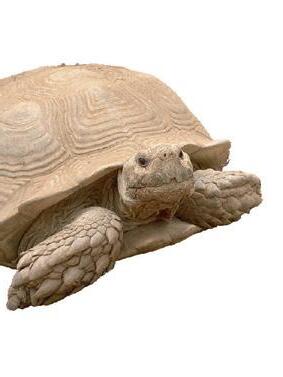






7. What was something you prayed/hoped for that happened this year?
What achievement are you most proud of this year?
What was the best decision you made this
How are you different from a year ago? Who or what had the biggest impact on your life this year?
What is something new you learned about yourself this year?
What 3-5 words would you use to describe this year for you?
19. What advice would you give your last-year self?
20. What’s something you’re looking forward to in 2025?
21. What’s something you’ll do to step out of your comfort zone next year?
22. How do you intend to be different at the end of next year?
23. What’s something from this year that you want to make sure you continue doing next year?
24. What is one word you want to be your primary focus in the New Year?








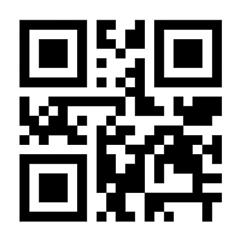




TO SUPPORT PARENTS and caregivers in creating a path to better health and wellness, Delta Dental of Arizona is proud to present this dental and vision health resource guide, offering answers to frequently asked questions, tips to prevent oral and eye diseases and new ways Delta Dental of Arizona is helping care for the entire family.


BECAUSE GOOD ORAL AND VISION HEALTH starts at infancy, Delta Dental of Arizona’s individual and family plans encourage parents to get regular checkups for their kids with the Free Until Three™ benefit. Simply put, there is no charge to cover dependents under the age of 3.
Learn more at smilepoweraz.com

CAVITIES ARE ONE of the most common chronic diseases among children in the U.S. About one in five children 5 to 11 has at least one untreated cavity. In Arizona, more than half of Arizona’s kindergarten children have tooth decay, which is much higher than the national average.
According to the 2024 Delta Dental of Arizona Children's Oral Health Survey, while parents remain committed to their children’s dental health, they still have some obstacles to overcome. Nearly 80% acknowledged their child’s oral health is not as good as it could be. Parents say this is because they do not floss enough; eat too many sweets; do not brush enough; and/or drink too much juice and soda. The survey also showed that families' daily lives are interrupted when kids experience dental
problems. Almost three in five parents whose kids have had issues with their teeth say that the consequences have impacted other parts of their lives.
Most parents also admit they find it challenging to get their children to brush their teeth. More than two-thirds experience difficulties getting their kids to comply with this critical dental health practice. Taking time away from more enjoyable activities is the biggest issue followed by kids finding flossing boring.
The good news: preventive care is on the rise. Among those who took their child to the dentist, more than nine in ten did so for preventive care!
Takeaway: parents' involvement is crucial for their child's oral hygiene.
LIKE SO MANY of us, the Tooth Fairy reeled in her spending this past year. Findings from Delta Dental of Arizona’s Original Tooth Fairy Poll® revealed the average value of a single lost tooth during the past year declined by 8% from $5.63 to $5.18. This represents the first year-overyear decline in Tooth Fairy giving in several years. But no matter the exact dollar figure she gives, the Tooth Fairy is a great way to get kids excited about oral health, teaching them that a healthy mouth supports a healthy body.
HERE ARE 7 TIPS to help ease the stress children living with certain medical, intellectual and physical disabilities may have with the dentist and oral care:
1. Clean Your Child’s Teeth Daily: If your child resists the traditional way of brushing, try to brush your child’s teeth with their head in your lap. This can soothe their nerves.
2. Make Accommodations: Make toothbrushing time easier for your child. If your child can’t grip the toothbrush, cut a hole in a tennis ball and slide the toothbrush through. If that doesn’t work, try using a piece of Velcro to wrap around the child’s hand and hold the brush in place.
3. Practice Healthy Eating Habits: A bunch of grapes or slices of an apple make much more desirable snacks than storebought munchies.
4. Find the Right Dentist: Look for a
dentist experienced in working with children with special needs, as not all dentists have the specific training or expertise required. Seek out specialists in this area and consider asking other parents of children with special needs for recommendations.
5. Make a Plan: Before your child’s appointment, talk with the dentist to address any concerns. Ask what to expect and how to prepare your child. Be sure to mention any behaviors that may affect the visit or eating habits that could contribute to tooth decay.
6. Oral Health is Health: Make your dentist a part of your child’s health team. Visiting a dentist should be held at the same priority level as visiting the medical doctor.
7. Avoid Trigger Words: Help to make your child feel safe at the dentist. Avoid using words like “shot” and “drill” or phrases like “be brave.” This can add to your child’s anxiety.
CHILDREN WITH SPECIAL NEEDS are at higher risk for oral health issues for a variety of reasons. Often, medications have high sugar content, causing dry mouth that leads to a buildup of plaque and bacteria. In addition, children with special needs may hold food in their mouths for too long without swallowing, causing extra sugar to stick to their teeth, or they may have physical challenges with a brushing and flossing routine. Here are common issues to look out for:
• Tooth decay, gum disease and missing teeth
• Teeth that are not aligned
• Teeth grinding and clenching
• Holding food in their mouth for too long
• Breathing through the mouth
• Pushing the tongue against the back of the teeth

Also, be aware that teeth may appear later in life—sometimes even after the second birthday—in children with Down syndrome, and mouth trauma and injury from falls or accidents are more frequent in children with seizure disorders or cerebral palsy.
FOR THE ESTIMATED 7 million adults and children living within the United States with intellectual or developmental disabilities (IDD), visiting the dentist for oral health care can be overwhelming or even inaccessible. In an effort to advance its mission to create a path to better health and wellness, most Delta Dental of Arizona dental plans will give children and adults with special health care needs access to increased benefits.
These benefits include:
• Additional dental visits to increase patient and caregiver comfort and set treatment expectations.
• Up to four dental cleanings in a benefit year.
• Extra chair time for treatment delivery modifications necessary to accommodate patients with sensory sensitivities, behavioral challenges or other barriers to treatment.
• Use of anesthesia to provide dental care, which may include up to four units of anesthesia, when necessary.
Any eligible enrolled employee or their enrolled family members diagnosed with a special health care need that significantly impairs their ability to receive routine covered dental services may have access to additional services. Delta Dental of Arizona defines a person with a special health care need as an individual with a physical, developmental, mental, sensory, behavioral, cognitive, or emotional impairment or a limiting condition requiring medical management, health care intervention, and/or the use of specialized services or programs.
Delta Dental has also invested in increased training for providers by partnering with the University of Pennsylvania on a free continuing education series aimed at building awareness of oral health care to this population.
By Dr. Heather Schneider
WHILE THE AMERICAN DENTAL ASSOCIATION (ADA) reports that athletes are 60 times more likely to suffer harm to their teeth when not wearing a mouth guard, it plays a crucial role in preventing oral health and even head injuries both on and off the playing field. Given this, Delta Dental of Arizona is dispelling the most common myths about mouth guards:
Myth 1: Only Athletes Need Mouth Guards. While it’s true that athletes should wear them to protect their teeth during sports, they aren’t the only ones who can benefit. People who grind or clench their teeth at night use night guards—a type of custom-fit mouth guard— to prevent tooth damage and reduce jaw pain.
Myth 2: Mouth Guards Are Uncomfortable. Another myth about mouth guards is that they are uncomfortable and hard to wear. While it’s true that some store-bought mouth guards can be a bit bulky and fit poorly, there are different types available. Customfit mouth guards, which you get from your dentist, are made to fit your mouth perfectly. They are usually more comfortable and easier to wear, even though they cost a bit more. A great, budget-friendly alternative for athletes is a boil-and-bite mouth guard. Some brands can even be reshaped if your teeth move. And better yet, some can accommodate braces!
Myth 3: Mouth Guards Don’t Need Cleaning. Mouth guards can collect bacteria, food particles and plaque, just like your teeth even with only occasional use. It’s important
to clean your mouth guard regularly to keep it fresh and hygienic. Rinse it with water after each use and clean it with a toothbrush and toothpaste regularly.
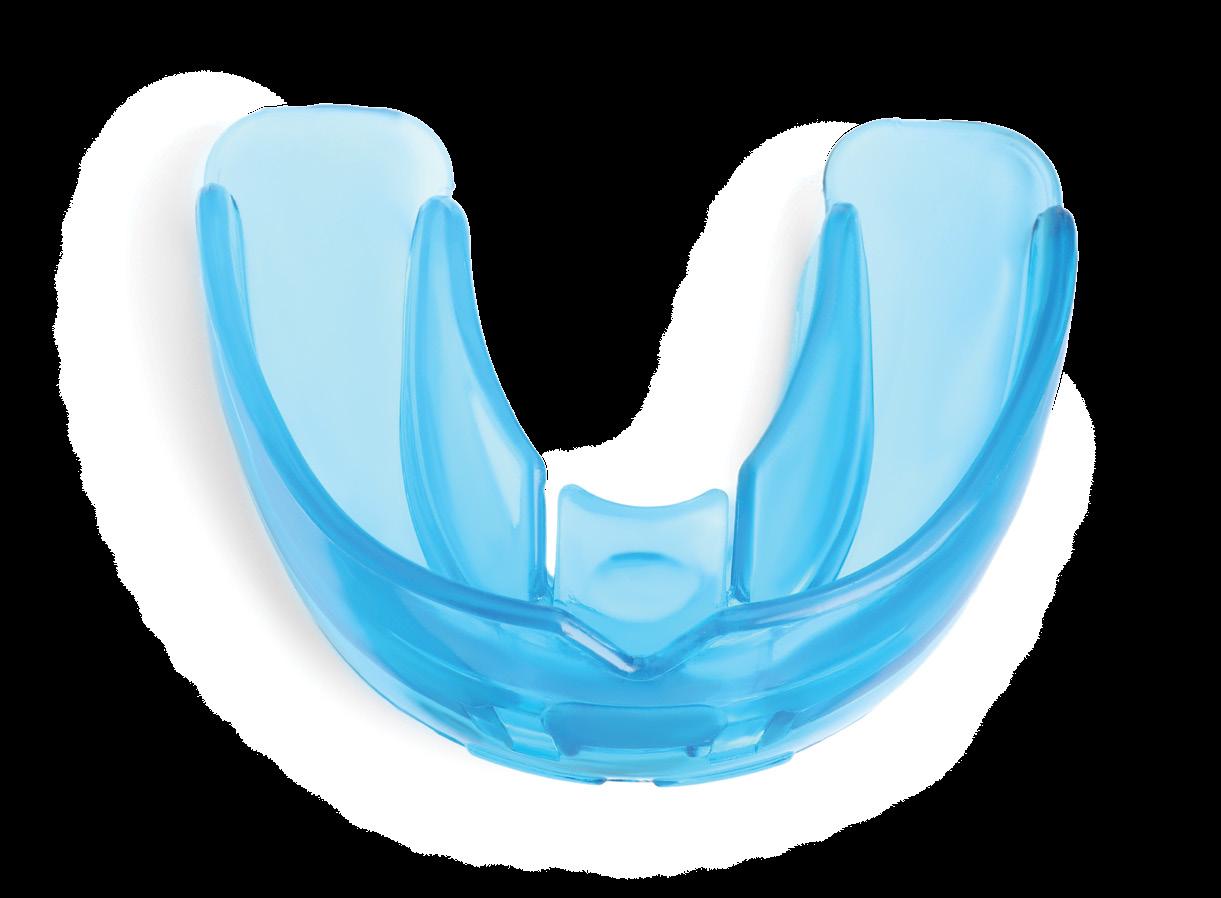
Myth 4: Mouth Guards Are Indestructible. When a mouth guard gets too worn out, it might not fit right anymore, which means it won’t protect your teeth like it should. That’s why it’s important for both adults and children to replace their mouth guards when it becomes too loose, showing signs of damage, if it changes in color or if you develop mouth sores because of a loose and rocking appliance. Keeping your mouth guard in good shape means your teeth stay safe and protected.
Myth 5: Mouth Guards Can’t Be Worn with Braces. Wearing a mouth guard over braces is important. If you get hit in the face, a mouth guard can prevent your braces from cutting your lips or cheeks. It also helps protect your teeth from getting damaged. Wearing a mouth guard can make playing sports safer and more comfortable, even with braces on. It’s a simple way to keep your mouth safe while staying active.
Myth 6: Mouth Guards Don’t Prevent Concussions. Mouth guards can help prevent concussions by cushioning the impact to your head and jaw during sports. When you get hit in the face or jaw, the force can cause damage to your brain, resulting in a concussion. A mouth guard absorbs some of this force, reducing the risk of a concussion.
Myth 7: Mouth Guards Are Expensive. What’s great is that mouth guards are offered at different prices, so there’s something for every budget. Some mouth guards are custom-made by dentists and can cost more, but there are also many affordable options you can buy at a store or online. These over-thecounter mouth guards can still provide good protection for your teeth and jaw.
Myth 8: Mouth Guards Must Cover Back Molars. Mouth guards can still protect your teeth and jaw even if they don’t cover your back teeth. Some mouth guards are designed to cover just the front teeth and still do a great job of cushioning impacts. The important thing is that the mouth guard fits well and stays in place during activities. So, even if a mouth guard doesn’t cover your molars, it can keep your mouth safe.
There is now a Delta Dental Athletic Mouth Guard available designed with twice the impact absorption of traditional mouth guards. They have a patented fitting material that makes speaking, drinking and breathing easier while providing a remoldable, bracesfriendly fit. Enjoy a 50% discount on your purchase at the Delta Dental store. Just use the code RAK50 at checkout.
Visit store.deltadental.com to shop now and save.
Dr. Heather Schneider is the dental director at Delta Dental of Arizona and has more than 20 years of experience in dental administration, dental education and clinical dentistry.

IF YOUR CHILD loves sports, improving their vision skills can give them an advantage on the field. Good vision is essential for athletes of all ages, whether they're in competitive leagues or just playing for fun. Here are six key vision skills to practice:
• Depth Perception: Have your child practice throwing and catching at varying distances. Use targets like hula hoops to help them judge distances better.
• Dynamic Vision: Set up drills where your child tracks moving objects, such as a rolling ball or a frisbee. Encourage them to focus on the object as it moves quickly.
• Focusing Regulation: Create a game where your child switches focus between near and far objects. For instance, have them look at a nearby ball, then quickly at a distant tree.
• Peripheral Vision: Play games like “shadows” where your child must keep their eyes on a moving object while also being aware of other players around them.
• Vision Focusing: Use drills that involve spotting multiple targets in quick succession, such as hitting different cones arranged at various distances.
• Vision Tracking: Set up a batting practice where your child swings at pitched balls. Focus on their ability to track the ball from the pitcher's hand to the plate.
Adding these activities to your child's practice routine can improve their sports skills and make training enjoyable!
COLOR BLINDNESS is a common vision condition that affects how children perceive colors. It occurs when certain cells in the eye do not work properly. While many people think of color blindness as seeing the world in black and white, it usually means difficulty distinguishing between specific colors, especially red and green or blue and yellow.
Parents should be aware of signs that may indicate color blindness. Some common symptoms include:
• Confusing colors, especially reds and greens or blues and yellows.
• Sensitivity to bright lights and certain color combinations.
• Reading issues with colored pages or worksheets with color on color.
If you notice these signs, you should have your child’s vision checked by an optometrist or ophthalmologist.
If your child is diagnosed with color blindness, reassure them that it’s just a different way of seeing the world. Encourage them to ask for help when needed and advocate for their needs in school. Teachers can help by using clear labels and avoiding color-dependent instructions. You can also look for resources, such as books or websites, to help them understand their condition better.
Color blindness is not a barrier to success. With understanding and support from parents and teachers, children can thrive academically and socially. If you suspect your child may be color blind, don’t hesitate to seek professional advice. Early intervention can make a big difference!
By Sarah Sharits
WHEN YOUR BABY arrives, securing health insurance is a top priority. But don’t forget about dental and vision coverage! These types of insurance are just as important for your child's overall well-being. This guide will help you understand everything you need to know about dental and vision insurance for children, making it easier for you to ensure your little one gets the care they need as they grow.
As soon as your baby starts teething around 6 months, it’s a good idea to consider dental insurance. Cavities can develop quickly, even in babies, so having coverage ensures your child gets the care they need. Regular dental visits help monitor their oral health and provide tips for healthy development.
In school-aged children, poor oral health can lead to missed school days. However, most dental issues are preventable with good hygiene and regular check-ups. Investing in dental insurance will set them up for success.
Don’t forget about vision health! Schedule your child’s first eye exam between 6 months and 1 year old, then follow up by age 3, and every two to three years after that. Regular visits to the eye doctor help keep track of their vision and catch any issues early on.
When choosing dental and vision insurance for your little ones, take some time to compare plans and see what they cover.

Think about your children’s ages and their needs for the upcoming year. Don’t forget to check the overall costs, including deductibles and co-pays, and see if the insurance has a good network of dentists and eye doctors, including pediatric specialists. This will help you save money and ensure your kids get the care they need!
For dental coverage, look for plans that cover most preventive care, like check-ups and cleanings, as well as essential treatments like fillings and extractions. It’s also great if they include fluoride treatments and sealants to help prevent cavities. For vision coverage, make sure the plan includes eye exams, vision screenings and helps with the cost of glasses.
Around age 6, your child’s permanent teeth will start coming in. It’s important to get dental sealants for their back teeth to protect them. By age 7, your dentist may recommend an orthodontist visit to check for braces. A plan that helps with dental work and orthodontics can be valuable.
your child grows, their visual needs may change, so it’s important to have a plan that covers regular eye exams, glasses and any necessary treatments, especially as older children and teens may experience frequent headaches or difficulty focusing.
Getting dental and vision insurance for your infant and child is crucial for their health and happiness. Early coverage helps prevent issues and supports their growth. Check your employer's plan for family coverage options or consider individual plans and state programs like Medicaid or CHIP to fit your family’s needs.
Sarah Sharits is the Corporate Communications Manager with Delta Dental of Arizona. Sarah talks about her dog a lot and enjoys running, being an Auntie and obsessively researching purchases before she makes them.


AS A PARENT, you want the best for your child, especially when it comes to their health. If your child has diabetes, it's important to pay special attention to their oral and eye health. Diabetes can affect many parts of the body, including the mouth and eyes, but with proper care, you can help your child stay healthy.
Diabetes happens when the body struggles to use sugar, either due to low insulin (Type 1) or insulin resistance (Type 2). When blood sugar is high, it can lead to problems with teeth and eyes. Being aware of these effects helps you better manage your child’s diabetes and support their overall health.
Children with diabetes may get cavities more easily and their adult teeth may appear earlier. High blood sugar can cause dry mouth, which can lead to tooth decay and gum disease. Here are some ways to help protect your child’s oral health:
• Regular Dental Check-ups: Schedule regular visits to the dentist for cleanings and checkups. Make sure the dentist knows your child
has diabetes so they can provide the best care.
• Good Oral Hygiene: Encourage your child to brush their teeth at least twice a day and floss daily. This helps remove plaque, a sticky film bacteria known for damaging the hard surfaces of the teeth and causing cavities and gum disease.
• Healthy Snacks: Opt for health snacks like fruits, vegetables and whole grains. Limiting sugary snacks and drinks helps balance blood sugar and reduces cavity risk by minimizing plaque buildup from bacteria digesting sugars and carbs.
• Monitor Blood Sugar: Keeping blood sugar levels within a target range can help prevent oral health problems. Work with your healthcare team to set goals for your child’s diabetes management.
Diabetes can also affect your child’s eyesight. High blood sugar levels can damage the tiny blood vessels in the eyes, leading to a condition called diabetic retinopathy. This can cause your child to have trouble reading, seeing at night, seeing faces across the room and may even lead to blindness.
Here are some tips to help protect your child's eye health:
• Regular, Dilated Eye Exams: Make sure your child gets regular eye exams if they have diabetes. These exams can catch problems early and help prevent worsening vision with proper treatment.
• Monitor Blood Sugar Levels: Just like oral health, keeping blood sugar levels stable is crucial for eye health. High blood sugar can lead to swelling in the lens of the eye, affecting vision.
• Healthy Lifestyle: Encourage your child to eat healthy and be active. Support them by joining activities they enjoy, like dancing or biking. Choose fresh foods and avoid processed snacks and sugary drinks.
• Protective Eyewear: If your child plays sports, make sure they wear protective eyewear to prevent injuries that can affect their vision.
To help your child with diabetes thrive, prioritize their oral and eye health. Encourage good dental habits and regular eye exams. With your support and guidance, they can enjoy a happy, healthy life.

By Dr. John Lahr
AS YOUR KIDS GROW, their eyes are always changing, and good vision will help them do well in school. If they have trouble seeing, it can impact both their learning and play. In fact, over 10 million children in the U.S. suffer from vision problems that can affect learning success. However, many parents aren't sure if a school vision screening is enough or if their child needs a comprehensive eye exam. Knowing the difference between the two is important for protecting your child's vision and helping them succeed in school.
Your child may have a vision screening at school, the pediatrician's office or a community
health center. These screenings help identify any vision problems that may need further evaluation by an eye doctor. Vision screenings usually include:
• Basic Eye Chart Tests: Your child will be asked to read letters or symbols with each eye from a distance to check how clearly they can see things far away.
• Eye Coordination and Movement Tests: These quick tests look for problems like lazy eye or crossed eyes, which affect how your child's eyes line up and work together.
• Color Vision: A test to see if your child has trouble telling certain colors apart, like red and green.
While vision screenings can catch common problems, they don’t tell the whole story. Up to 75% of school vision screenings miss vision problems, and don’t check for more serious eye conditions that can affect your child’s ability to focus, read or learn. They also don’t look for eye diseases that could affect their eye or overall health.
A comprehensive eye exam, usually done by an optometrist or ophthalmologist, gives a deeper look at your child’s vision and overall eye health. Unlike vision screenings, these exams check more than just how well your child can see. They also include tests for:
• Checking for Focus Problems: The eye doctor uses several instruments to see if your child has nearsightedness, farsightedness or astigmatism.
• Pupil Assessment: Abnormal pupil symmetry and reaction to light can indicate a number of eye or general health issues.
• Examining Overall Eye Health: The doctor uses specific instruments to look closely at both the front and inside of your child's eyes and checks for any signs of eye diseases.
Addressing vision problems early can really help your child both in school and in everyday life. That’s why the American Optometric Association (AOA) suggests that kids get a comprehensive eye exam before they start school. The first exam should be done around 6-18 months old, then at 3 years, at 5 years and every year while your child is in school.
The Bottom Line
As a parent, it’s important to know the difference between vision screenings and comprehensive eye exams to keep your child’s eyes healthy. A vision screening is a good start, but it shouldn’t replace annual eye exams. Making sure your child has good vision health is an important way to support their learning and overall health.
Dr. John Lahr is the medical director at EyeMed Vision Care, which administers Delta Dental of Arizona’s DeltaVision plans, with almost 50 years of experience in eye care delivery and vision care.

Whether this is your very first pregnancy, you’re in the thick of the newborn days, or experiencing the adjustment of postpartum, we’ve got topics that you don’t want to miss. Check out our roundup of pregnancy and postpartum musthaves, highly recommended baby products, health tips for conceiving, and even a fun date night idea for expecting parents. Plus learn about pelvic floor health, how to rebalance hormones, get better sleep, and more! Dads will find helpful pieces on postpartum depression, vasectomies, as well as how to be an interactive and supportive birth partner.
By Monique Seleen
HAVING A BABY rocked my world. I know people say that “you’ll never be fully ready,” but I didn’t quite understand the magnitude of that statement until I was in it. Now that my son is almost three years old, I’ve had some time to reflect on the whole process, figure out what I could differently next time, and assess what worked well that I would do again.
3 Things I’ll Do Differently:
Prepare more mentally for labor/birth. Leading up to the birth of my son, I mainly just focused on getting the epidural when I could and that was that. Unfortunately, my epidural didn’t go quite as I hoped (it only worked on one side of my body, had to be redone, and then made me so numb that I felt like I was going to be paralyzed!). Next time around, I want to have a few more “tricks up my sleeve” for handling the pain in case I choose not to get an epidural or it doesn’t go quite as planned.

Hire a postpartum doula. I had a bit of difficult postpartum recovery and was put on modified bed rest for a few weeks. I greatly depended on my mom and husband for support, but next time I plan to hire a postpartum doula for additional help. Many postpartum doulas will not only look after the baby, but will assist with meal prep, play with older children, and do some light house cleaning. That sounds like a dream to me.
Lower my expectations. With my next baby, I plan to completely lower my expectations and not expect to “bounce back” seamlessly or easily. I thought that within a week I’d be taking my baby for walks around the block, that within 6 weeks I’d be working out again, and that my life would “resume” once my baby was sleeping through the night. None of those things were true. Having a baby is a huge transition, a major physical feat, and takes time to adjust in all aspects.
3 Things I’ll Do Again:
Formula feed. I formula fed my son from the very first feed in the hospital and I plan to do it exactly that way again. This allowed
me the chance to have other people assist with feedings, gave me freedom to focus on my healing and sleep, and my son absolutely thrived on formula (he was continually in the 99th percentile for growth and slept amazingly!).
Sleep Train. Sleep (or lack thereof) was one of my biggest concerns about having a baby. We began implementing sleep training strategies with our son when he was around 4 weeks old. It took some discipline and hard work on our part, but by 12 weeks old he was sleeping 12 hours uninterrupted at night and has been the greatest sleeper and napper ever since. We got him used to his crib from day one, practiced naps in it throughout the day and moved him to his own room early on. I plan to do this as much as I can with my second baby, too.
Maternal Mental Health Counseling. I am a huge proponent of counseling and feel like there are so many benefits of finding a good maternal mental health counselor to help guide you through the ups and downs of motherhood. I continue to see my therapist regularly and don’t plan to stop!
By RAK Staff
1. Mama’s Tummy Relief
When the nausea starts to hit around 6 weeks this tincture is great to have on hand. Bonus, it can be used on anyone 1 year and up (due to the honey) for soothing a sour stomach! earthley.com
2. Nausea Relief Drops
These lozenges were a lifesaver when I started to feel a little uneasy. I was able to pick these up at my local Wal-Mart so it was easy to keep on hand. They tasted great and seemed to work instantly! myupspring.com
3. Belly Serum
The presence of stretch marks can be partially impacted by genetics (thanks, mom!) but I love how hydrated this serum makes my stomach. Especially as it expands and gets itchy! It claims to penetrate deep into the layers of skin and fade stretch marks and scars. Not sure if that’s true but I love the habit of adding this to my selfcare routine! I also love that it’s not as greasy as other products so it doesn’t ruin my clothes. 8sheep.com
4. Pregnancy Tea
It’s hard to get all the right nutrients when you’re pregnant so when the temps drop I love to make a cup of tea. While this isn’t my favorite flavor of tea I love its blend of herbs like nettle, lemon, ginger, and raspberry leaf. The only downside is that it has to steep for 30 minutes so it’s not as quick as making a regular cup of tea. I just make a big batch and reheat as needed! earthley.com
5. Pregnancy Pillow for Sleep
This is my 5th pregnancy so trust me when I say I have tried ALL the pillows to help with sleep. Before Wildbird I had a U-shaped pillow but since it wasn’t adjustable I couldn’t move it around when I wanted to switch positions. And when I got to the 3rd trimester and had to go to the bathroom frequently I had a hard time getting out of the pillow!I love that this one can use it for nursing or just holding the baby as well. wildbird.co
6. Sneak Peek At-Home Gender Test
My husband and I are not very creative with gender announcements, and we’re definitely not party-people. So Sneak Peek is a great, intimate way to find out the gender at home with your significant other. But, if you do want to have a little party with friends and family just have the results sent to a loved one instead of yourself! If you opt for the snap device it’s practically painless and has a much less chance of contamination. sneakpeektest.com









Towards the end of pregnancy when my hips and back ache I love bouncing on this ball when I’m working instead of sitting in a chair. And when you’re in early labor it helps with contractions and getting the baby into the right position. I’m sure there are specific brands for pregnant moms but I just chose a fitness ball for my height online. urbnfit.com

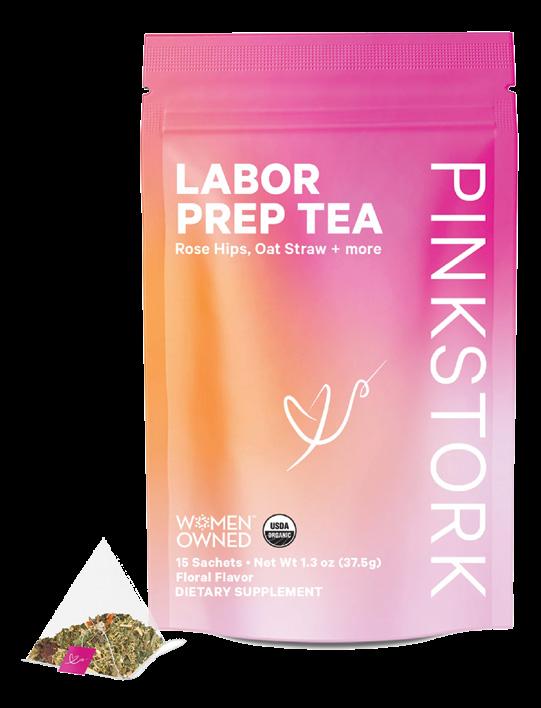



This pregnancy (coupled with Earthley’s Nourish Her Naturally, Pumpkin Seed Oil, and Cod Liver Oil) I opted for Pink Stork’s line of pregnancy supplements. I chose the Total Prenatal + DHA, Prenatal Iron, and Choline for well balanced nutrition. They also have their prenatal in gummy form which is great if you’re frequently nauseous! pinkstork.com
Did you know that most people are deficient in magnesium? Magnesium has been my secret to better sleep (for me and my babies!), less cramps, and even less constipation for years but I’m extra diligent to use it when I’m pregnant.
• Rowe Casa Organics: I love this gel for putting on before bed because it has a high dose of magnesium, dries quickly, and has a light smell. I’ll put it on my abdomen, legs, and even the back of my neck if needed. It works great for those middle of the night muscle spasms, too! rowecasaorganics.com
• Moon Juice: I like this powder to drink in my ‘mocktails’ before bed–either with club soda, lemonade, or tart cherry juice if I need a little extra help in falling asleep. I like all the flavors but they also have a ‘naked’ one that you can flavor however you’d like! moonjuice.com
I usually start drinking Red Raspberry Leaf Tea in the second trimester but this 3rd Trimester Tea is a mineral-rich blend of herbs to support the needs of a human-growing mama! Whether it actually makes labor easier, I’m not sure…but it certainly can’t hurt and my labors have all been easy-peasy and short! pinkstork.com
There are a few brands with maternity coats but I love this one from Seraphine. It looks great with everything, has room for my expanding belly, and keeps me warm. Our winters get into the negative temperatures and my dogs still need a few good walks a day so this sub-zero option is great. Keep an eye out for sales but the price is worth it if you frequently need a winter coat. It can be used for pregnancy, baby wearing, and if you remove the expandable panel you can just use it as a regular coat forever! seraphine.com
If you’re finding that your underwear just isn’t cutting it anymore… it might be time to try some underwear designed to wear over your expanding belly. Personally, I've tried the under belly ones and over the belly ones and prefer this one. And, you can wear it after labor until you feel a little more comfortable in regular underwear. These are definitely an investment but can be used for multiple pregnancies. blanqi.com
1. Postpartum After Ease Tincture
With each baby my after-pains got tremendously worse, especially while nursing. My midwife recommended this tincture with my last baby and I grabbed it thinking it couldn’t hurt. I ended up using it a lot and despite the terrible taste, it worked! I froze the extra and will use it again this summer. wishgardenherbs.com
2. Take Care Down There Trifecta
I’m not going to lie…you’re going to be incredibly sore ‘down under’. It’s best to have all these things on hand before you give birth! It will help tremendously with pain and healing. This kit has a soothing perineal spray for instant relief, a sitz bath, and a perineal balm for longer. Both the balm and the spray can be stored in the fridge for extra relief. earthmamaorganics.com
3. Upside Down Peri Bottle
These are nothing new but I’ve tried a few brands and this one was the winner for me last postpartum! I saved it for my next baby. I just leave it by the toilet and fill it with warm water as needed. hellopostpartum.com
4. Beef Organ Capsules

While I cut back on these capsules during pregnancy because of the amount of Vitamin A (and not enough research to prove it’s safe) my midwife highly recommends beef liver or organs postpartum to help replenish energy and nutrients. biomeology.co
5. Nursing Pads
Whether you choose to breastfeed or not, you’re going to have a little bit of leakage from your breasts. While the disposable ones can be handy for on-the-go I found them terribly uncomfortable and they didn’t stick well because of the constant moving of my bra for feeding. These reusable ones can be washed and worn over and over! If you’re not doing daily washing I recommend soaking them before you wash because that spoiled milk smell can linger. kindredbravely.com
6. Nursing Bras
There are so many choices for bras and honestly, I don’t feel like one will work perfectly for every person. I have a small cup size so I can get away with less support. It also depends on if you need the ability to pump in a bra. Personally, I did not need a specific bra for pregnancy because my cup size didn’t change. I recommend trying a few types to see what you prefer! kindredbravely.com
7. Postpartum Belly Wrap
Not just for C-Sections! (If you do have a C-Section, they make a wrap specifically for that, though!) After having a baby I find that much of my core stability is gone. So using this wrap helps support me in those first few weeks. It took some getting used to but after a while I hardly noticed it. bellybandit.com


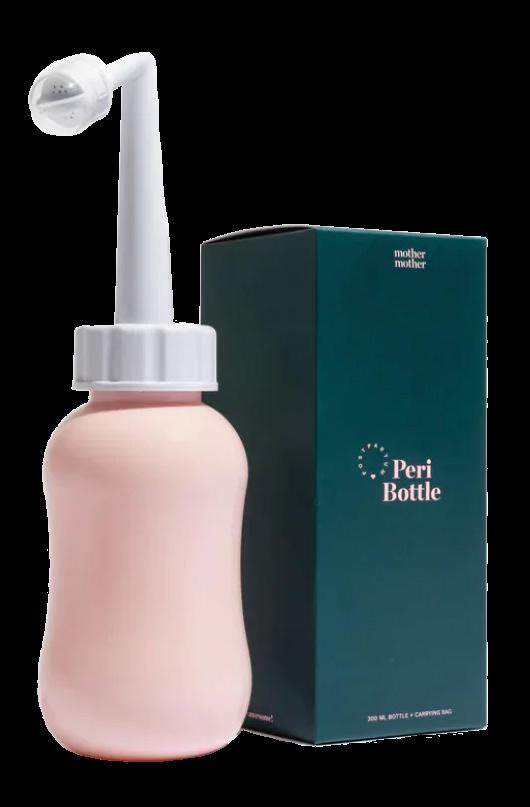

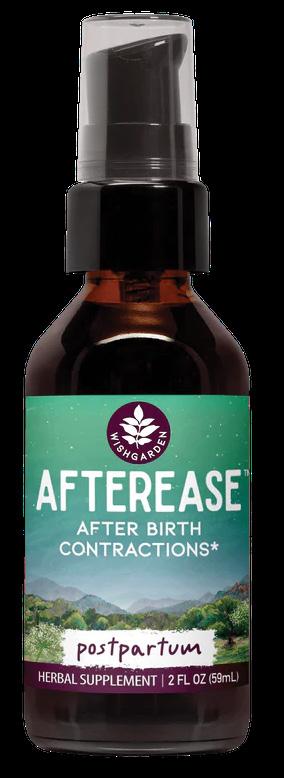




Mason Grey makes adorable printed sets that are super soft and cozy – perfect for lounging about. As an added bonus, they also make matching swaddle sets and even mama/mini matching pajamas so you can match with your baby and/or toddler! masongreyla.com
9. Hemorrhoid Cream
I wish I could say I didn’t need this..but..it’s so nice to have on hand. I also highly recommend the cooling hemorrhoid spray you can buy at any drug store! rowecasaorganics.com


By Willow Midwife Centers for Birth & Wellness AZ
PREGNANCY BRINGS JOY, excitement, and a flood of advice from well-meaning friends and family. However, not all this advice is based on facts. As Certified-Nurse Midwives at Willow Midwife Center, we often hear concerns from expectant mothers about what they should or shouldn’t do during pregnancy. Let’s separate fact from fiction and explore some common pregnancy myths:
Can I consume caffeine?
Despite fears about caffeine consumption during pregnancy, you don’t have to give up your morning coffee completely. The American College of Obstetricians and Gynecologists says it’s okay to have up to 200 milligrams of caffeine daily – or about one 12-ounce cup of coffee. Just remember, caffeine hides in other places too, like tea and chocolate.
Can I eat sushi?
Seafood isn’t off the menu when you’re expecting. In fact, it’s even safe for most pregnant women to eat sushi in the U.S., provided it’s prepared in a clean environment. However, some fish is high in mercury, including king mackerel and swordfish, and consuming foods with mercury in high amounts during pregnancy increases the risk of birth defects.
Is exercise safe?
Exercise during pregnancy is not only safe, but encouraged. A 2023 University of Utah Health study found that regular exercise throughout pregnancy is beneficial by:
• Reducing risk of gestational diabetes
• Lowering chances of cesarean delivery

• Decreasing likelihood of excessive weight gain
• Improving mood and energy levels
• Increasing quality of sleep
Safe exercises for most pregnant women include:
• Walking
• Swimming
• Prenatal yoga
• Low-impact aerobics
• Light to moderate weight training
While these activities are generally safe, consult your healthcare provider before starting or continuing any exercise regimen during pregnancy.
Early in pregnancy, stomach sleeping poses no issues. As pregnancy progresses, this position becomes less practical and comfortable.
However, side sleeping, particularly on the left, promotes optimal blood flow to the uterus. A study by the National Institutes of Health found that sleeping on the back or right side in late pregnancy does not increase the risk of stillbirth, pregnancy complications, or smaller babies.
So what is the best position to sleep in? The one you find most comfortable. Don’t worry if you wake up on your back, as the position
when you fall asleep is most important.
For many pregnant women, sitting in a hot tub during pregnancy sounds like a great way to ease muscle aches. However, use caution when choosing a hot tub for relaxation and pain relief by:
• Not staying in a hot tub for more than 10 minutes.
• Getting out if you feel too hot or uncomfortable.
• Sitting with your arms and chest above the water to keep you from getting too warm.
At Willow Midwife Center, we believe in helping mothers make informed decisions about their pregnancy and birth experiences. Our goal is to ensure mothers feel confident, supported, and well-informed every step of the way. Willow Midwife Center offers comprehensive midwifery services in Mesa and Phoenix, Arizona. Learn more at willowbirthcenteraz.com.
Diane Ortega, DNP, CNM, and Belinda Hodder, DNP, CNM, are Certified Nurse-Midwives and co-founders of Willow Midwife Center for Birth and Wellness. With over 30 years of combined experience, they are passionate about providing personalized, evidence-based care to expectant mothers.

By Kim Vehon
FAMILIES COME TOGETHER in many different ways. For me, I always knew I wanted to adopt. My sister was adopted and, growing up, adoption was woven into many of my favorite childhood stories.
My husband Brian and I started our foster care journey when our two girls were 3 years old and 20 months old. At first, we only wanted to bring a child into our home that would forever be a part of our family, but after talking with our licensing agency and other families, we decided that we would step into the world of foster care.
We then decided that we were open to fostering one child that was under a year old, but after receiving a call for an 18-month-old looking for a safe place to land, we changed our minds. That one call would forever change our story as it led us to adopting a sibling group of four. Fast-forward to today, I am now blessed to be the mom of seven kids, ranging in age from nine to 15.
Our journey inspired me to start Foster Arizona a non-profit, public charity in 2013. For 11 years, we have been able to support families and youth impacted by foster care.
to Start
In our journey, we quickly learned that foster care is not the same as adoption. Most kids come into foster care with the goal of going back to their families. The foster parent’s role is to support the state’s efforts to bring families back together. That means intentional support for birth parents through

shared parenting. In this scenario, the foster parent chooses to love a child for as long, or as short, of a time as they are in your home.
If a child cannot be reunified, their case plan changes to adoption. Foster parents receive priority for adoption if family placement is not possible.
Safe haven babies have their parental rights severed quickly. This is due to the parent choosing to relinquish their rights. Babies coming into foster care this way move directly into an adoptive family’s home. It is rare for non-safe haven babies to be placed with adoption-only families.
For parents who are looking for adoption only, it is important to consider the ages you are open to. Most adoptable kids are not babies. Also, consider whether you are willing to take in a sibling group. Kids often come into foster care with siblings. It is a huge gift to provide a home for siblings to grow up together in.
Who Can Foster
Single or married adults over 21 who
are financially stable are eligible to foster or adopt. Families attend Foster Parent College and work with agencies to complete home studies. This training helps parents understand the needs and developmental expectations for kids with trauma.
Once training and home study conclude, the family can be licensed to foster or adopt. This process can take four to six months.
Children in foster care have experienced adversities. Losing your family of origin is traumatic. Parenting a child through trauma is challenging and may not be for everyone, but our community and the resources at Foster Arizona and other agencies can help you experience the joy of helping a child through a difficult time in life.
Kim Vehon is the CEO of Foster Arizona, a nonprofit that provides resources, training and advocacy for foster families across the state. She is a mother to seven children, four of whom she adopted after fostering. Reach her at kim@fosteraz.org

By Dr. Erin Ellis
If you’re on the exciting journey of trying to conceive, it’s essential to equip yourself with the right knowledge and habits. Let’s dive into some health tips that can make this journey smoother and more enjoyable.
First things first—understanding your cycle is crucial. Your menstrual cycle isn’t just about your period; it’s a roadmap that can guide you on when you’re most fertile. Typically, ovulation occurs around day 14-16 of a 28-day cycle, but everyone is different. Tracking your cycle using apps or ovulation kits can provide valuable insights into your most fertile days.
Now, let’s talk about lifestyle. Maintaining a healthy lifestyle can significantly impact your fertility:
• Smoking: It’s no secret that smoking is harmful, but did you know it can also affect fertility? Both partners should consider quitting.
• Excessive Alcohol: While an occasional
glass of wine is fine, excessive drinking can interfere with conception.
• Caffeine Overload: Moderate caffeine intake is okay, but try not to exceed 200 milligrams per day (about one 12-ounce cup of coffee).
• Eat a Balanced Diet: Focus on a diet rich in fruits, vegetables, whole grains, and lean proteins. Foods high in antioxidants like berries and nuts are great for boosting fertility.
• Exercise Regularly: Moderate exercise helps maintain a healthy weight and reduces stress levels—both important factors when trying to conceive.
• Stay Hydrated: Drinking plenty of water keeps everything in working order down there! A good rule of thumb is at least half your body weight in ounces of water daily.
There are also natural ways you can boost your fertility:
• Herbal Supplements: Herbs like maca root and vitex (chaste tree berry) have been traditionally used to support reproductive health. *Please consult with your physician before taking any herbal supplement.
• Acupuncture: This ancient practice has been shown in some studies to improve fertility by regulating hormones and increasing blood flow to reproductive organs.
• Stress Management: High stress levels can negatively impact fertility. Techniques like yoga, meditation, or even just taking time out for yourself each day can make a big difference.
Remember, every journey is unique— what works wonders for one person might not be the magic bullet for another. Keep listening to your body and consult healthcare professionals as needed.
Wishing you all the best on this beautiful journey!
Dr. Erin Ellis is a Naturopathic Doctor who helps women balance hormones, fix crappy periods and regain energy they once had to be their happiest, healthiest selves. In 2010, Dr. Ellis was diagnosed with a rare form of Non-Hodgkin’s Lymphoma which was the turning point in her life and prompted her to pursue her dreams of becoming a Naturopathic Doctor. When she’s not empowering others to become their best versions, Dr. Ellis enjoys helping her community, spending time with her dogs, exploring new locations in her RV, and making new memories with her Fireman.
By Monique Seleen • Photos Courtesy of Lumitory

BECOMING PARENTS is a life-changing experience. If you are expecting a baby, perhaps you’re wondering how it’s going to affect your relationship, or maybe you have hopes and dreams for all you envision your growing family to be.
Since your days of just the two of you are soon coming to an end, there’s no better time to start planning some intentional and meaningful date nights.
Lumitory’s New Parents Conversation Cards are the perfect addition to your date night – providing thought-provoking questions to connect as expecting parents.
Jessica Reinhart, Gilbert mom and founder of Lumitory, created the conversations cards as a way to cultivate meaningful dialogue and understanding across various life stages.
“In a world where it’s easy to feel disconnected, I wanted to create something that would spark genuine conversations and strengthen relationships,” said Reinhart. “It started with a simple belief that meaningful connection doesn’t have to be complicated—it just needs the right nudge. We believe that connection and community are at the heart of a good life, and our hope is to make it easier for people to build both.”
The New Parents Conversation Cards have a variety of questions that are specifically designed to help expecting or new couples pause, have meaningful conversations, and align on things like parenting values, fears, and expectations.
“It’s easy for couples to get caught up in the whirlwind of preparation and forget to check in with each other,” said Reinhart. “[The cards] encourage openness and connection, laying a strong foundation for navigating parenthood together as a team. When couples feel heard and understood, they’re better equipped to handle the ups and downs of this new chapter.”
Here are some creative ways to incorporate the New Parents Conversation Cards:
• Order take out or go out to dinner and take turns asking and answering questions while you eat
• Bring the cards with you to your next prenatal appointment or ultrasound and answer a few on your drive or while in the waiting room
• Make it a nightly routine where you read and answer one question before bed each night
• Go for a walk where you discuss a couple cards along the way
• Start a countdown to your due date and pull out one card for each day you have left
• Bring the cards with you on your babymoon or an upcoming vacation
In addition to the New Parents Conversation Cards, Lumitory also offers a variety of different sets for all stages of life including:
• Gathering conversation cards
• Family conversation cards
• Wedding conversation cards
• Dating conversation cards
• Legacy conversation cards
• Holiday conversation cards
“I hope customers experience moments of genuine connection—those simple, meaningful conversations that leave you feeling closer to the people you care about,” said Reinhart. “We want our conversation cards to make connection feel easy and natural, helping people slow down, be present, and enjoy each other in ways that matter most.”
To find out more about Lumitory or to order conversation card sets , visit lumitory.com








By Kimberly Vermillion
BRINGING HOME A newborn baby is an exciting milestone, but for pet owners, it also means preparing a furry family member for the arrival of a little one. This change can lead to stress or confusion for pets if they’re not properly prepared for the shifts in attention, noise levels, and new boundaries.
With some proactive steps and a little patience, pets can adapt smoothly to the addition of a newborn baby to a household. Here are some tips on to help your pet be prepared:
There are tons of products that parents use to care for their new baby like baby lotion, diaper cream, and the list goes on. Prior to the baby’s arrival, you should begin incorporating these products into your everyday routine to expose your pet to new, interesting scents.
Do a Meet-and-Greet with a Baby
If possible, have a friend or relative that has a baby come hang out with you and your pet. This can help your pet get used to the sight and sound of an infant. If appropriate or safe when evaluating the animal’s past
experiences with small children, allow the pet to meet and interact with the baby in a controlled, safe environment with adults and owners present and ready to step in. Use positive reinforcement, like treats and praise, to encourage a positive experience.
If meeting a baby isn’t possible, periodically play recordings of baby sounds to acclimate your pet to the noises a baby makes can be helpful. You can find variations of giggling, cooing, and crying on YouTube.
Avoid reprimanding or punishing your pet around the new baby. Cats especially never respond well to punishment. You don’t want your pet to develop negative associations with the new baby.
Nurseries should not be placed in rooms or areas where your pet has a favorite hangout spot like a favorite window or the area where their litter boxes were previously placed. Not
having access to their normal spaces can be very stressful for a pet and make it very difficult to keep them out of the nursery area. The best way to introduce your pet to your newborn baby is to prepare before the baby arrives home. Meeting a new baby that smells like the lotion and other scents they’ve been sniffing for the past couple of months? Not so scary! Familiar scents and sounds can be comforting and make the transition smoother. Plus, if they get treats every time they have a positive interaction, they’ll be lining up for them!
To learn more, visit aawl.org
The Arizona Animal Welfare League is the oldest and largest no-kill shelter in the state. Founded in 1971, AAWL has saved the lives of over 100,000 cats and dogs by providing a full range of services for animals and pet owners, including adoptions, behavior training, and low-cost medical care. These life-saving programs are only possible because of the dedicated AAWL community, who support the shelter through volunteering, adopting, fostering, and donating. For more information, visit aawl.org







By Monique Seleen • Photos courtesy of the Mauter Family
LIKE MANY NEWLY married, young couples, Jacquie and Josh Mauter of Mesa were excited to grow their family. They had enjoyed a few years of married life and decided they were ready to try for a baby. Getting pregnant didn’t take long, however, the couple experienced three early miscarriages, leaving them defeated and frustrated.
They turned to a fertility clinic for some answers.
“We got a bunch of tests done and nothing came up,” said Jacquie.
As recommended by their fertility doctor, Jacquie and Josh made the decision to try intrauterine insemination (IUI) to see if it could improve their chances of conceiving. But after four rounds with no success at getting pregnant, they were ready to call it quits.
They took a short break from all of the medical interventions, then decided to give IUI one more shot. This time, they had four follicles; two that were mature, which the doctor explained increased their likelihood of twins.
“Initially they told me that I had high HCG levels, but we thought that was normal since we knew twins could be possible,” said Jacquie. “Then around week 6 we did an ultrasound and it was really shocking. Initially it looked like 3 babies. There was a fourth one, but it was really small with no fetal pull.”
Much to their surprise though, at their next ultrasound – just one week later – the fourth one showed a fetal pull and it was official: they were pregnant with quadruplets!
“Honestly we were just quiet,” said Jacquie reflecting back on finding out the news. “It sort of felt like we were in a dream.”
At first, Jacquie’s pregnancy seemed to be smooth sailing. The couple was enjoying sharing their news with family and friends, and went on to reveal that all four babies were girls.
“I loved being pregnant,” Jacquie said. “I didn’t have many symptoms, felt good, had a lot of energy, and didn’t feel sick.”
However, at 23 weeks, doctors noticed Jacquie’s blood pressure starting to increase. With preeclampsia being especially common in pregnancies with multiples, she was told to take it easy.
Unfortunately, by 24 weeks her blood pressure had not improved and she was told she would need to be admitted to the hospital.
“I had just had my baby shower because we were preparing to deliver early, we just didn’t know it would be this early,” said Jacquie. “I didn’t want to go to the hospital, but knew I had to. It was all a shock.”
While doctors’ attempted to lower Jacquie’s blood pressure in the hospital, they then discovered that one of the babies was no longer growing and not expected to survive. Jacquie and Josh were then faced with a difficult decision: Either let the baby pass in utero, or deliver all four babies right then and there.
“I knew I was going to have to deliver in a few days anyway, so we made the decision to deliver them all at once. We didn't want to deliver a stillborn.”

Rylee, Brooklyn, Peyton, and Morgan were born via caesarean at St. Joseph’s Medical Center in Phoenix on August 23, 2024.
All of the girls were immediately taken to the NICU – each weighing in less than two pounds; with baby Brooklyn the smallest and less than a pound.
Just 26 hours later, baby Brooklyn passed away.
“Doctors discovered that her esophagus didn’t connect – and she was too small to even operate on,” said Jacquie. “Even at full term she would have needed surgery.”
With a whirlwind of emotions happening all at once, Jacquie said it was all a very traumatizing experience that she is still working through.
“I have these three others that need us; I can’t even think about what happened. I just shut it out right now. I know it will hit eventually.”
With multiple complications including Jacquie being readmitted to the hospital twice for extremely high blood pressure, a collapsed lung for baby Peyton, along with all the hurdles premature babies face, it has been a bumpy ride of the Mauter family.
However, Jacquie said they are grateful for the NICU team at St. Joseph’s Medical Center and are trusting the process as it unfolds.
“The nurses and doctors have been incredible,” said Jacquie. “The things they do for these babies are truly insane.”
For now, the babies remain in the NICU until they reach the criteria and growth needed to be discharged. Jacquie and Josh do their best to visit and care for them as much as they can, and look forward to the day when they can take their babies home.
“People don’t realize we haven’t even heard them cry,” said Jacquie. “We’re so excited for just the basics. I don’t even feel overwhelmedeven though I’m sure it’s going to be really hard - I’m just excited.”

DURING A BABY’S first year of life, there are so many rapid changes and developmental milestones. It can sometimes be challenging to know whether your baby is progressing typically, especially if it is your first baby or has been a while since you’ve been through the baby stages.
Dr. Gina Montion, a pediatrician with Banner Health Center, answered some commonly asked questions to help you better understand some of the important milestones and developmental goals to watch for in your baby:
What are the most common milestones for babies between the ages of 0 to 12 months?
Developmental milestones are markers of development in areas of motor, language and social skills that are attained by the majority of neurotypical babies and children by certain ages and in certain sequences. Premature babies may reach milestones later than those with their same birth age. If a baby has not reached a milestone yet, I remind parents that for each age’s milestone about 75% of typical kids achieve that milestone at the anticipated age, which means 25% of typical kids have not.
When should babies typically meet those milestones?
Common key milestones that occur in the first year of life are as follows:
• 2 months: Smiles, start following with eyes, raises head when put on tummy.
• 4 months: Laugh aloud, turn toward sound, start to roll over one way.
• 6 months: Babbles, sits with support, reaches with either hand.
• 8 months: Plays peekaboo, gets into sitting position, picks up objects with fist.
• 10 months: Pulls to stand, says mama or dada, pick up tiny objects with a pinching grasp.
• 12 months: Walks holding onto furniture, waves good-bye, says mama or dada discriminately.
What should parents do if their baby is not hitting a milestone? When should they be concerned?
Regression, or the loss of a previously demonstrated milestone, can be a cause for concern and should be addressed with your pediatrician.
How can parents stay informed and help support their child’s development?
There are many apps available to help track milestones or with development activities.
The CDC has a free milestone tracker that is great. Vsit cdc.gov/ncbddd/actearly/ milestones-app.html
Another great resource is the book, “What to Expect in the First Year,” which lists month by month milestones.
Parents can also support their children’s development by reading daily, playing with them and giving them plenty of floor time.
How and when do these milestones get updated?
The developmental milestones were updated in 2022 by the AAP to make them more helpful for parents. Healthychildren.org is the AAPs website and is a great way to stay on top of the AAPs latest updates.
Dr. Gina Montion is a pediatrician at Banner Health Center. She strives to educate her patients and their families about all aspects of their care so that they are empowered to help in the decision making of their health care management. She has an unwavering philosophy that medical care can be delivered in a fun and compassionate way, based on realistic, common sense ways rooted in science and the latest pediatric developments. She aims to treat her patients like her own children.
By Monique Seleen

FOR SUCH TINY humans, babies sure do have a lot of stuff. I remember the first time we went away with our son when he was three months old and it felt like we packed up the entire nursery just for one weekend – a pack’n’play, sheets, sound machine, stroller, toys, bouncer – you name it, we probably brought it.
Luckily, we were driving and could cram all that stuff in our trunk. But the next time we traveled (by plane), we quickly realized we couldn’t bring it all with us.
That’s when I learned about Rents-4-Baby – a service that provides a way for you to get all the baby stuff you need (or want) without having to lug it all with you.
Through Rents-4-Baby’s website you can browse a variety of carefully curated, highquality baby gear, from strollers and car seats, to cribs, high chairs, and toys. Everything is available for short-term rental, and the easy-to-use website lets you reserve exactly what you need, when you need it, without the hassle of packing any of it!
The team will then deliver the equipment to your location—whether it’s a hotel, rental property, or even the airport—ensuring everything is set up and ready for your little one.
When your rental period is over, they’ll pick it all up, so you can focus on what matters: enjoying time with your family.

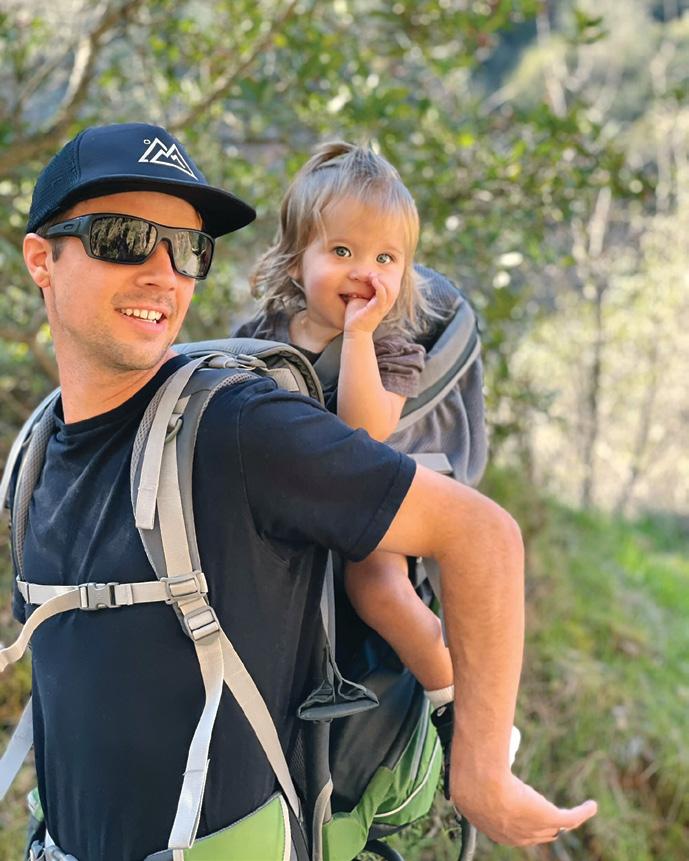
• All the baby equipment is clean, safe, and reliable with strict cleaning policies and up-to-date baby gear.
• Rents-4-Baby is backed by exceptional customer service offering convenience and peace of mind at every step.
• They’ll handle the heavy lifting (literally) and set everything up for you.
• You can travel light, knowing that everything you need will be there waiting for you when you arrive.
Your traveling days don’t have to be over just because you had a baby. Enjoy the freedom of exploring with your little one in tow, without sacrificing on the baby equipment that matters. Wherever you go, Rents-4-Baby will make your travel easier, more comfortable, and fun.
Visit rents4baby.com to learn more.

By Kate Reed
BABYWEARING HAS BEEN around for centuries but many parents are nervous to try it. It’s a great hands-free way to walk, cook (carefully), work, and tend to other children. I’ve tried all of these carriers below and like them for various reasons! Of course there are many more styles and brands of carriers but these are my favorites that I’ve personally tried. You can buy carriers secondhand or even borrow them from a lending library if you want to try them first!
This style is my favorite for newborns up to about 4 months or so (although it can be used much longer–up to 35 lbs). It’s lightweight and easy to carry–I like to have one in the car and one around the house! They’re soft, easy to nurse in, and the size is adjustable. Threading the rings can have a learning curve but once you do it a few times you’ll be a pro.
1. Hope & Plum. This company does not disappoint! The patterns are adorable, two different fabric types (hemp or linen), the staff offers virtual fit checks, and THREE different lengths!
2. Kyte Baby. This was my first brand I used for ring slings so I have a soft spot for them. They’re affordable compared to other brands, soft, easy to use, and neutral colors. These just come in one size (80 inches) which works well for me.
3. Wildbird. Wildbird is newer to me for carriers but I love the fabric choices (linen) and they come in two different lengths and hardware choices.
If your older child loves pretend play, consider a matching or coordinating toy carrier! Perfect for stuffed animals, dolls, and maybe even large action figures. A great gift for a big sibling!
1. Hope and Plum Lark Carrier
2. Wildbird Mini Sling
3. Tula Mini Toy Carrier
4. Happy Baby
5. Ergo Doll Carrier
Lennie Lamb Doll Carrier

I love onbuhimos for newborns because of the high carry and then again when they’re older (sitting independently) because they love to see everything up high on my back! One of my favorite aspects of this carrier is that there is no waistband so it’s extra comfortable–especially during pregnancy!
4. Happy Baby. This is my go-to for newborns (7 lbs+) and you don’t need an insert! Lots of different colors, fabrics, and they are so soft! The downside is that they are often out of stock but there are usually lots for sale in your local market!

5. Toddler Lenny Lamb. My favorite for 12 months+ because of the wider panel. Comfortable for me and my little one!
6. Sakura. I was definitely taken by surprise with this one because I didn’t think I’d like the leather but I was impressed with how comfortable I was for hours wearing my 20 month old while I volunteered. This carrier is designed for 15 lbs+. The downside is that this carrier is not considered machine washable so it’s a little harder to keep clean.
These are the carriers I prefer for hiking, naps, or longer wear (3 hours +). They’re designed for small babies up to 40+ lbs (typically). They are soft, fold up easily to fit into a diaper bag, wash easily, and allow for discreet nursing. This is how I get practically anything done in those early weeks of having babies. These carries can be worn in the front or back.
7. Happy Baby Original Baby Carrier. This is my go-to choice for carriers. I have a variety of colors and fabrics to coordinate with and have one inside, in the car, in the strollers, and extras for wash day! This one can be used from 7 lbs with no insert which means it’s usually great from day one if you have an average sized baby!
8. Hope and Plum Lark. This carrier was SO different for me but I am truly in love with it. It has two different sizes, wide cross backstraps, and a tall panel for longevity. The downside for me personally is that they opt not to include a cover but I love mine for sunny days. It’s also designed for babies in 3-6 month clothing sizes and up so you can use it when your baby reaches 10 lbs.
By RAK Staff
1. Little Unicorn Toddler Hooded Towel
Splash into bath time with a plush and absorbent hooded towel. Featuring a cozy hood and pockets for little hands, the hooded towel is crafted with printed muslin on the outside and ultra-soft terry cloth on the inside. $40. littleunicorn.com
2. Kendamil Organic Infant Formula
My son was exclusively formula fed. We loved Kendamil Organic infant formula because it combines sustainably sourced organic ingredients, starting with natural whole milk fats and lactose from grass-fed cowsreplacing palm oil, soy, and corn. It also has unique prebiotic blends to help support a healthy immune system, and includes both plant-based DHA (Omega-3) and ARA (Omega6) for brain and vision development. $39.99. us.kendamil.com
3. Comotomo Baby Bottles
Comotomo Silicone Baby Bottles feature an innovative and sensible design and are ideal for babies who have trouble transitioning from nursing to bottle-feeding. They are equipped with vents designed to prevent colic while completely eliminating annoying leaks. Available in 5 oz and 8 oz sizes. $22.98. comotomo.com
4. TruBliss 2-in-1 Turn-A-Tot High Chair
Raise your little one up to tabletop height with ease, safety, and peace of mind. With both an incredibly sturdy wooden design ,TruBliss’s 5-point harness system, and a 360° swivel, the 2-in-1 Turn-A-Tot High Chair ensures safety for your little one. $199.99. trublissbaby.com








The perfect addition to a nursery, this slim and compact humidifier helps to improve sleep quality, keeping throat and nasal passages clear for deeper, less interrupted sleep. The whisper quiet ultrasonic cool mist will run for up to 24 hours, can humidify a room of 500 square feet, is easy to clean and refill, has an optional mood light setting, and doesn’t require a filter! $99.95. heydewy.com

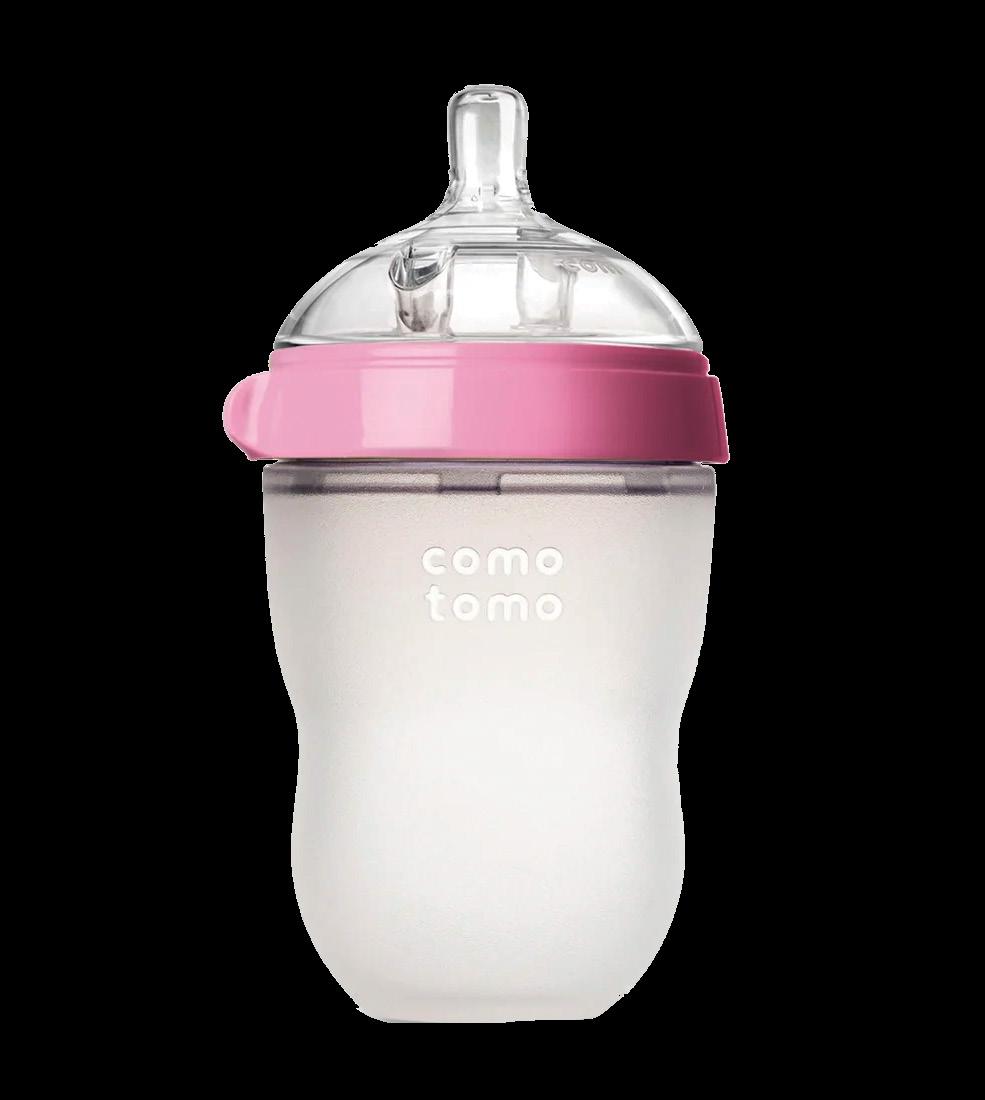
Whether you’re bottle feeding or breastfeeding this pillow is amazing for support. I’ve tried MANY pillows for breastfeeding and they all fell short. I spend a good chunk of postpartum time nursing so I wanted a supportive pillow that was comfortable. It has narrow sides so it fits well behind me and brings the baby nice and close for a good latch. So despite the high price point compared to similar pillows, this is worth it if you’re going to have multiple babies! $116. butterr.co
We have a lot of kids…with soon to be 3 of them still needing diapers and/or changes of clothes for accidents. We needed a diaper bag with plenty of space and this is the one! We have it jam-packed with diapers, clothes, toys, snacks, and even a first aid kit. It has a hard rubber bottom which makes it stand up easily and it’s neutral enough for my husband to wear. $189.99. itzyritzy.com
If you want a great sleeper, I can’t recommend these swaddlers enough! It’s great for those early months before they transition to a sleep bag. It has dual zippers for diaper changes and you can remove the swaddle part when they outgrow it! $75.
The manual nose sucker works fine, but if it grosses you out–try this! It works for those little babies but all the way up until toddlers when they learn to blow their noses. This one is rechargeable, has a light, and plays music to distract your baby. $59.99. amazon.com



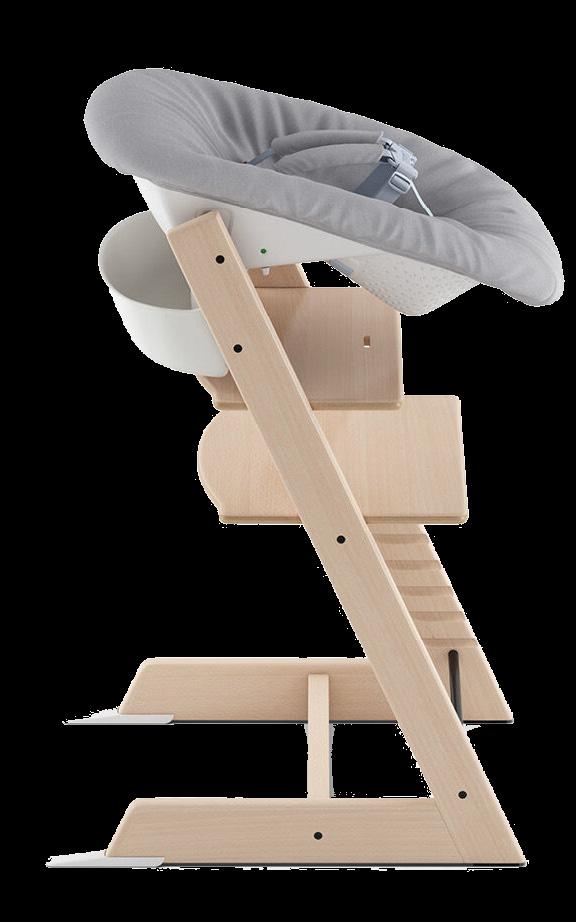
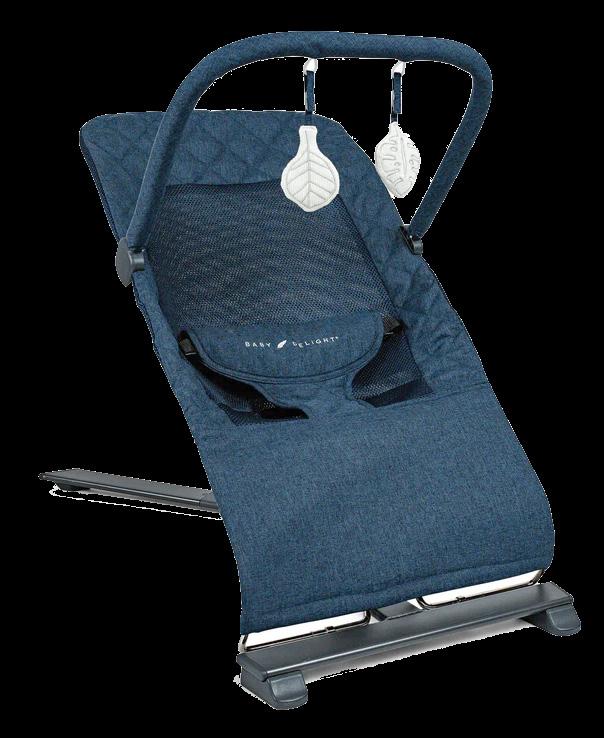
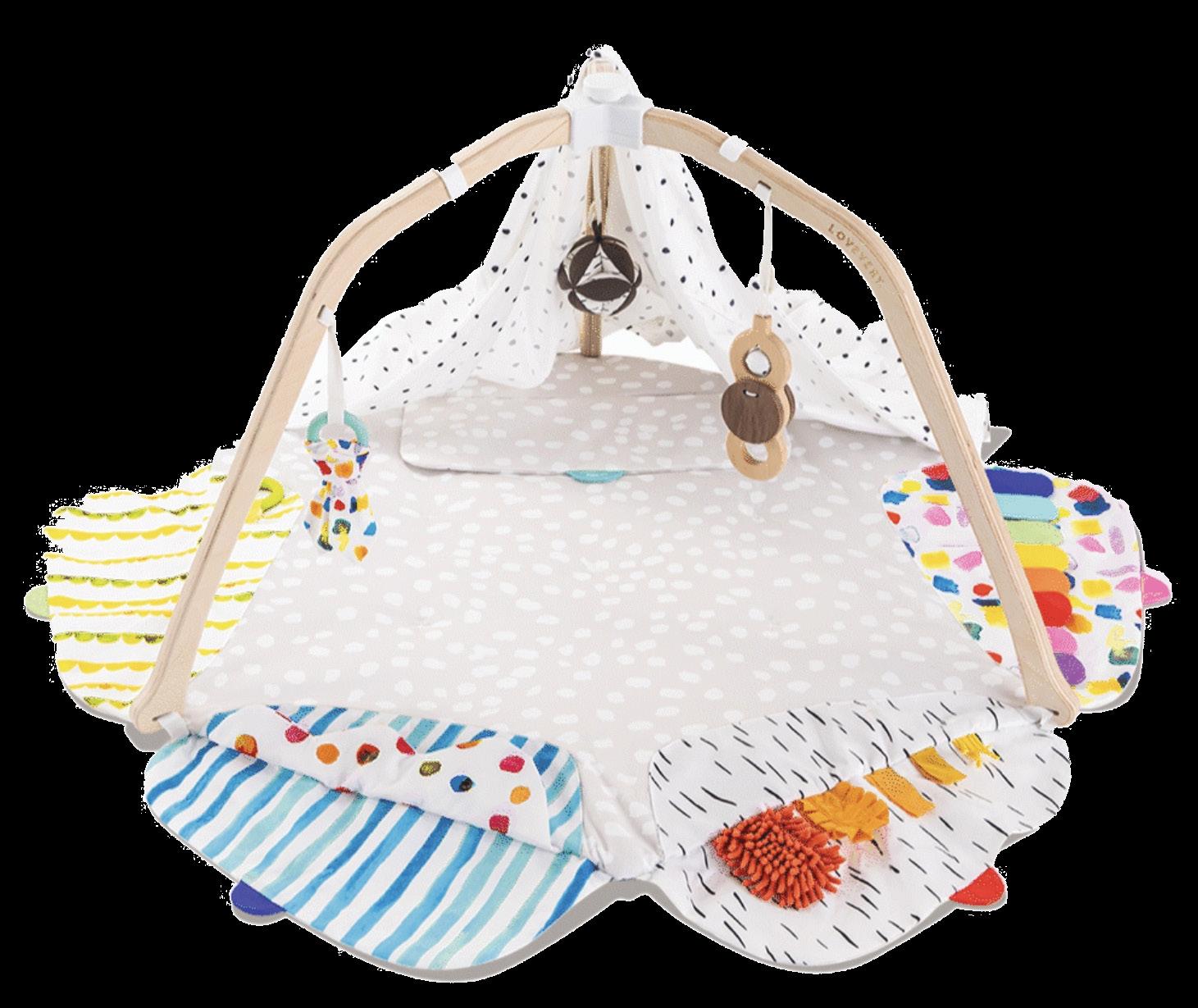
Whether you are using it as a crib like we did for our 3rd baby, or use it for travel like we do for every overnight trip, or just as a safe place for you little one to play while you tidy up the house–a ‘playard’ is a great investment. There are lots of choices but I have been using the same one from Chicco since my oldest was born nearly 12 years ago! So it’s a solid brand. They don’t make the same model anymore, but this is close. Over the years we’ve lost nearly all the accessories so before the next baby makes his appearance we might need to look into a new one. $269.99. chiccousa.com
I’ve used (and love) nearly everything from this brand so this baby set makes a great gift for a new mom! It comes with diaper cream, diaper spray, teething oil, baby wash, baby lotion (smells so good!), baby decongestant, tummy oil, and baby oil for some pre-bedtime massages. Plus, some Mama’s Milk Salve for supporting milk production! $134. rowecasaorganics.com
Some babies love bouncing, and others are indifferent but mine will usually tolerate a bouncer for at least long enough to shower or fold a load of laundry! I love this one because it folds flat and I can store it or bring it with us when we travel. $89.99. babydelight.com
If you’re hoping to take milestone photos each month, pick out a set of signs you love (there are so many kinds). Snap a few photos on your phone and voila…pictures are done! $32. cadenlane.com
I love these high chairs because they truly get years and years of use. You can start with the newborn bundle so that your baby can be a part of dinner (or cooking!) from the beginning. Then add the baby seat when they’re ready to eat solids, and then remove it and use it as a booster when they’re older! The seat can be used up to 242 lbs so even adults can sit on them. $349. stokke.com
There are hundreds of different styles to choose from but if you’re looking for one that can be used from day 1, designed by an expert to maximize baby brain development, and be used as a fun fort for toddlers–this one from Love Every checks all those boxes. $140. lovevery.com
By Monique Seleen
WHETHER YOU’RE SEARCHING for well-made baby items for your own child, or looking for a gift to bring to a baby shower, here are two locally owned businesses offering one-of-kind, top-quality, and madewith-love products:



If you’re a fan of bamboo pajamas, you’re going to love all of Alexander Layne’s products. This Gilbert-based, mother-daughter business set out to create the coziest and most eco-friendly sleepwear for families.
As a self-proclaimed ‘mompreneur,’ Anyssa Holland, co-owner of Alexander Layne, wanted a way to provide for her family while also staying home with her two small children. Inspired by her youngest son’s struggle with eczema, Anyssa found that bamboo clothing material provided comfort without irritation and wanted to create more of it.
The material is not only gentle on sensitive skin, but is also super soft and stretchy, allowing little ones to get prolonged wear out of it as it expands and grows with them.
In an effort to understand the unique needs of children during bedtime, Alexander Layne intends for their sleepwear to bring joy, comfort, and freedom of movement to bedtime adventures. The designs combine functionality with all kinds of adorable and festive prints, ensuring your little ones not only feel snug but also look incredibly cute.
To shop the latest collections, visit alexanderlayne.shop
Started by mom and grandmother, Brenda Rea, the Olive Spa baby products are handcrafted in small batches with unrefined, fair trade, cruelty-free, and raw ingredients. Brenda and her husband Perry are the co-owners and founders of the Queen Creek Olive Mill and therefore have access to the freshest, high polyphenol extra virgin olive oil possible to use in their products.
As a mother of five, Brenda was always concerned with keeping her children healthy and happy. When sensitive skin and dry Arizona days left some of her kids with mild eczema, she researched natural dry skin remedies and discovered that olive oil was the answer.
The Olive Spa baby line includes:
• Baby Bum Butter
• Gentle Baby Oil
• Gentle Baby Powder
• Gentle Baby Lotion Stick
• Gentle Baby Foaming Wash
• Gentle Baby Olive Oil Soap
• Gentle Baby Laundry Soap
All of the products are free of preservatives and are oil based instead of water based. In addition to the olive oil, they include nourishing ingredients such as Shea butter, coconut oil, and essential oils.
“I hope people love it,” said Brenda. “I started this because I wanted to use it myself and for my family. I sold it because I wanted to make it available as an alternative for other people to use.”
To find out more or place an order, visit olivespa.com
By Monique Seleen

MOMMY MINGLE OFFERS a unique co-working environment designed specifically for work-from-home mothers. The new space located in Queen Creek allows moms to work alongside their little ones with the help of childcare services right on site.
“We understand that balancing the roles of being a present mother and maintaining productivity at work can be challenging,” said Natalie Mallet, founder and CEO of Mommy Mingle. “As a work-from-home mom myself, I created this space to address these challenges and support other moms in achieving their professional and personal goals.”
The Mommy Mingle facility operates out of the large basement in Mallet’s house, creating a warm and cozy home-like environment for both moms and kids.
Working moms will find three office spaces: two communal co-working desks and one private office for calls or meetings. Additionally, there is a communal lounge area
and a coffee bar, providing a space for women to connect and build their community. Moms are welcome to bring snacks or a lunch –there’s even a little kitchen space to store food in the fridge and a dining table if needed.
The childcare space offers a fun and inviting environment for children who are walking stably to 5 years old. Cassie Crismon, the lead childcare specialist, has 12 years of experience being an in-home nanny and is currently pursuing an early education degree. She says her biggest passion is tailoring care to each child. Kids are led through structured activities, circle time, arts & crafts, as well as free play and snack time. Currently, Mommy Mingle has a 1 to 5 caregiver to child ratio.
To accommodate varying needs and schedules, Mommy Mingle offers tiered memberships as well as drop-in options. The flexible membership plans allow moms to use the space according to their needs without
being tied to a specific number of days per week, allowing moms to utilize their hours as it best suits their schedule.
Moms can choose from two daily time slots: 8:30 a.m. to 11:30 a.m. or 12:30 p.m. to 3:30 p.m. There’s also the option to book both time slots for a full day.
Beyond the working space, Natalie says she plans to make Mommy Mingle a community for moms to connect, offering social gatherings including a weekly Women’s Circle as well as Mommy Mingle events.
Through its co-working and childcare services, Mommy Mingle is on a mission to create an environment that is both collaborative and nurturing so that no mother should have to choose between her career and her children.
For more information or to sign up for a membership, visit mymommymingle.com
HERITAGE ACADEMY
ACADEMY ELEMENTARY
FREE BREAKFAST & LUNCH
LIBERTY
ACADEMY TRADITIONAL

LIBERTY
ACADEMY ACADEMY TRADITIONAL

By Princess Estocia McKinney-Kirk

THE POSTPARTUM PERIOD is a critical time for new mothers, and it often comes with unique struggles that can be both physical and emotional. Understanding these challenges is key to fostering a supportive and nurturing environment for healing.
New mothers frequently face a range of difficulties during their postpartum period, including:
Physical Discomfort: Many women experience a loose sloshing organ sensation after birth, pain in various places, including diastasis recti and pelvic floor dysfunction, complicating recovery.
Emotional Fluctuations: The dramatic hormonal shifts that accompany childbirth can lead to mood swings and heightened anxiety. The societal pressure to embody the “perfect” mother only intensifies these feelings.
Insufficient Support Systems: Many women find themselves navigating this transitional phase without adequate support, highlighting the importance of community care.
Belly binding is a practice that involves wrapping the abdomen with a long, soft cotton fabric to provide essential support during the postpartum phase. This is not referring to the waist trainers or shapewear that has the velcro and boning. This art form
of belly wrapping draws from various cultural traditions, and promotes healing and comfort for new mothers. Each layer contours to the postpartum curves in an ultra-supportive and comfortable compression-style garment.
The advantages of ancestral belly binding offer several key benefits for postpartum recovery such as:
Abdominal Support: Stabilizing the core, aiding in the recovery from conditions like diastasis recti while also reducing back pain and increasing hip stability.
Improved Circulation: The gentle compression promotes blood flow, vital for healing tissues and decreasing swelling.
Emotional Security: The snug embrace of belly binding can foster a sense of comfort and safety, easing anxiety during this transformative time.
Enhanced Posture: Proper binding encourages better alignment, alleviating stress on the spine—a common issue for new mothers who often find themselves hunched over while caring for their babies.
At Bellibind, we offer comprehensive postpartum care that combines custom fitted belly wraps with modern support for holistic recovery which includes:
Personalized In-Home Care: 10 Service Package Options: From elite therapeutic
bodywork and wrap fittings to simpler wrapand-go sessions, we tailor services to meet every mom’s investment and recovery goals.
Virtual Consultations: For moms outside our in-home service areas, they may purchase our wrap kits, with video consultations offering guidance for at-home self-wrapping success.
Postpartum Support Plans: Our personalized plans help moms navigate the early weeks of recovery, offering physical and emotional care strategies.
Community and Education: Workshops & Events: A space for moms to connect, share, and learn together.
Digital Educational Resources: Empowering moms with materials and tools to reclaim strength confidently through our online client portal.
For a deeper dive into postpartum healing, my book Belly Binding: A Simple Guide to Reclaim Your Body and Heal Your Spirit, shares techniques and insights used at Bellibind to support mothers as they transition into this new phase of life.
With Bellibind, you’re joining a movement dedicated to restoring mothers’ well-being with every step of the postpartum journey. To find out more, visit bellibind.com
Princess Estocia McKinney-Kirk is a mother to two school-aged children and the founder of Bellibind, a company specializing in personalized postpartum recovery solutions.





















































By Veronica Frash

BECOMING A MOTHER for the first time is a transformative experience, filled with joy and excitement for the entire family. However, for many first-time moms, the experience can be daunting. Adjusting to your new role as a parent can be challenging— emotionally, mentally, and physically.
Experiencing a range of emotions after giving birth is entirely normal. The postpartum phase often feels like a roller coaster due to hormonal changes and the demands of caring for a newborn baby.
Some women may also develop postpartum depression (PPD) after giving birth. Approximately one in 10 women will experience PPD, which is characterized by symptoms like mood swings, anxiety, irritability and fatigue.
It is crucial that you approach this new chapter with compassion for yourself. As a mom myself and mental health professional, here are a few tips for adjusting mentally and emotionally after having your first child.
It’s important to remember that you’re not alone and ask for help. When help is offered, take it. Asking for help or accepting help does not mean you are incompetent. Connecting
with others who’ve been through similar experiences— like family, friends, or support groups— can be comforting. If you’re feeling isolated, seek out support groups for firsttime parents, either virtually or in your local community. The phrase “It takes a village” rings true for a reason.
Just like your newborn, you might also thrive with a consistent routine. Although it may be challenging to find a routine, flexibility is key. Babies can be unpredictable, much like your own emotions. This everchanging tiny human will eb and flow through different seasons, too. A flexible schedule can provide a sense of stability amid the chaos of motherhood. Develop a routine that works for you and be sure to include time for self-care.
Caring for others is harder when you’re not taking care of yourself. Make sure to get adequate rest, eat nutritious foods, and do gentle physical activity when possible. Taking time for yourself each day, whether it’s reading a book, taking a bath, or meditating, can help you feel your best.
Consult A Mental Health Professional
Everyone can benefit from therapy, especially first-time moms. A mental health professional can offer strategies for coping with the emotional demands of motherhood, adjusting to your new normal, and providing a safe space to express your emotions. Here at Cornerstone Healing Center, we offer a virtual intensive outpatient program, designed to support those going through major life changes.
By prioritizing your mental and emotional health, sticking to a routine, seeking help when you need it, and leaning on your support network, you can better navigate motherhood. Take care of your well-being because ultimately it will benefit both you, and your new baby.
Veronica Frash is the Director of Virtual IOP Program at Cornerstone Healing Center. Since its inception in 2017, Cornerstone Healing Center has established a reputation as Arizona’s premier mental health and substance abuse treatment center. With multiple state-of-the-art treatment facilities in Scottsdale and Phoenix and 8 different addiction and mental health programs with customizable treatment plans, Cornerstone Healing Center is a leader in both addiction recovery and mental health. To learn more, visit cornerstonehealingcenter.com
By Dr. Ronald Ruff
THE EMOTIONAL HEALTH of a newborn depends on the quality of maternalinfant responsivity beginning at birth. Responsive, sensitive parenting (RSP) is an evidence-based practice model to provide an infant with essential maternal and paternal nurturance, safety, emotionality, security, touch, soothing, stimulation, and basic care.
Why Responsive Sensitive Parenting is Beneficial:
Newborns are prewired to experience the feeling of emotion. It is the invisible drive that anchors, guides, and warmly welcomes the infant into the world. Infants possess an innate need to experience feelings and emotions at birth. If the child’s persistent emotional need is not satiated, feelings of deprivation occur.
RSP refers to family interactions in which parents are aware of their child’s emotional and physical needs and respond appropriately and consistently. Sensitive parents are ‘in tune’ with their children. RSP immediately facilitates the essential maternal attachment bond with her newborn.
How to Implement Responsive Sensitive Parenting:
There are four core elements of RSP: Turning, addressing, listening, and responding.
• Turning: Reorienting your focus from yourself to your child.
• Addressing: Willingly and unconditionally accepting your child as a unique person who is capable and permitted to voice their own ideas.
• Listening: Being empathic and understanding your child’s own frame of reference—how he or she sees the world.
• Responding: Responding in an honest, kind, and sensitive manner.
Maintaining an attuned mindset requires that we practice “mind-mindedness,” which can look like any of the following:
• Treating your newborn and infant not merely as an entity to be satisfied, but as someone who has a mind of their own.
• Tuning in to what your infant or child might be thinking or feeling.
• Learning to know your child’s cues and unique features.
• Being sensitive to and aware of your child’s cues and striving to accurately interpret them.
• Responding promptly and appropriately to your child’s cues.
• Being selectively and sensitively attuned to your child’s internal states and unique thoughts, feelings, and frame of reference.
The maternal attachment bond must be established at birth. There’s no time to waste in forming this vital connection to ensure a foundation for healthy emotional, social, and cognitive development.
By implementing RSP interactions you will be aware of your child’s emotional and physical needs, be able to respond appropriately and consistently, and feel ‘in tune’ with your child.
Ronald Ruff, Ph.D has had extensive experience in psychological treatment, assessment, and consultation in health care, education, government, judicial systems, training, teaching, and research. Dr. Ruff was awarded a fellowship to the Harvard Medical School Department of Psychiatry and Cambridge Hospital, Center for Addictive Studies. He was Clinical Director of a residential treatment center for children, Director of Clinical Internship Training, and an adjunct instructor who taught psychology doctoral students the core sequence of objective and personality testing, report writing, and psychotherapy.

By Banner Health

DAWN TUCKER USES her body for daily work as a trapeze coach and aerial artist. The mother of two is active, happy and living her best life.
However, shortly after the birth of her first son in 2021, Dawn suffered the unthinkable: a rectal prolapse also known as “rectocele,” which is when the rectum bulges forward into the vaginal wall and opening.
“It was very scary and weird,” Dawn recalls. “I literally thought my uterus was falling out.”
Dawn recounts that while she didn’t experience pain, it was extremely awkward and embarrassing at first.
“I had no idea [what was happening to me],” Dawn remembers. “No one had prepared me for this as a possibility of something that could happen. It felt like walking around with
Pelvic floor physical therapy may be able to help if you are experiencing any of the following symptoms including:
• Urinary or bowel urgency or leakage
• Pelvic heaviness or bulging
• Straining to empty bowels or bladder
• Urinary frequency
• Tailbone or sitting bone pain,
• Pain with vaginal penetration (such as needed for annual exams or sexual intercourse)
“It’s never too late for pelvic health PT,” says Amy. “As with any musculoskeletal condition, it is always better to address sooner than later, to minimize compensations that can occur that lead to additional problems, such as back pain. While it will take more time and effort to correct an issue later in life, however, it still can be accomplished with the right guidance and attention.”
a tennis ball in between my legs.”
She knew she needed help, which is when she reached out to Banner Physical Therapist Amy Flory, who specializes in pelvic health physical therapy through Banner’s CoreVia Pelvic Health program.
“As soon as I connected with Amy, she made me realize this was all pretty common [for postpartum moms],” Dawn says. “Working with Amy gave me the confidence to go right back to the studio to practice [aerial for my trapeze coaching] pretty quickly.”
According to Amy, pelvic floor dysfunctions occur in 20-30% of the postpartum population.
“Over the course of [a] year, about 20% of my total caseload are post-partum patients, both during and following the ‘4th trimester’ and [consist of] 50% of my pelvic floor-related caseload,” Amy said.
Amy says she’s seeing less reluctance now for patients to report their pelvic floor dysfunction and seek out care.
“When I started in this specialty nearly 30 years ago, it took women on average nine years to report symptoms to their health care providers,” Amy said. “Care is still overall quite delayed for women with these problems, but there are so many more resources available now for new moms, and less stigma in publications and online forums.”
Dawn’s words of wisdom for other moms who may be experiencing a prolapse or another pelvic floor dysfunction is to not be embarrassed.
“Educate yourself on your pelvic floor health during pregnancy,” Dawn says. “See a pelvic floor physical therapist as soon as you can and get all the pelvic floor information you can. Don’t be embarrassed.”
Banner Physical Therapy offers 60 convenient locations throughout Arizona. The centers provide a wide range of services to patients, including physical therapy, hand/occupational therapy, pelvic health, cancer rehabilitation, pediatric therapy, sports medicine and work injury prevention and management. For more information, visit selectmedical.com/outpatient
By Dr. Erin Ellis

BRINGING A NEW LIFE into the world is nothing short of miraculous, but it can also leave you feeling like you are on a hormonal rollercoaster ride. If you’ve been feeling more out of sync than usual, it might be time to check if your hormones are out of whack.
First things first, how do you know if your hormones are off balance? Common symptoms include: fatigue, mood swings, weight gain or loss, and changes in your skin and hair.
If any of these sound familiar, you’re not alone. Many women experience these changes post-pregnancy. It’s a good idea to speak with your health care professional to get lab work done, at least three months postpartum to determine any imbalances. You don’t need to suffer.
The good news is that you can include several lifestyle changes you can make to help rebalance those hormones:
• Nutritious Food Choices: Eating nutrient-dense foods is crucial. Think leafy greens, lean proteins, and healthy fats like avocados and nuts. Foods rich in omega-3 fatty acids such as salmon can also do wonders for hormone regulation. You want to make sure your calorie count is optimal to ensure adequate milk production.
• Supplements: Sometimes our diet doesn’t cover all the bases. Supplements like
Vitamin D, magnesium, and omega-3s can fill in those gaps and support hormone health. You can even continue your prenatal vitamins or choose a postnatal by the same company.
• Exercise: Regular physical activity can help regulate cortisol levels (the stress hormone) and boost endorphins (the happy hormone). Even something as simple as a daily walk or yoga session can make a big difference. Remember to listen to your body and don’t push yourself too hard.
• Sleep: Never underestimate the power of a good night’s sleep! Aim for 7-9 hours per night to give your body the rest it needs to rebalance itself.
Remember that every woman’s body is unique; what works for one person might not work for another. Don’t hesitate to consult with a healthcare provider who loves helping women achieve their best health—like me! We’ll figure out what’s best for you together because rebalancing your hormones should be as personalized as you are.
Dr. Erin Ellis is a Naturopathic Doctor who helps women balance hormones, fix periods and regain energy. In 2010, Dr. Ellis was diagnosed with a rare form of Non-Hodgkin’s Lymphoma which was the turning point in her life and prompted her to pursue her dreams of becoming a Naturopathic Doctor. When she’s not empowering others to become their best versions, Dr. Ellis enjoys helping her community, spending time with her dogs, exploring new locations in her RV, and making new memories with her Fireman.
By Sidney Garcia

SLEEP IS FOUNDATIONAL to a family’s wellbeing, impacting nearly every biological process in body and mind. While some “sleep debt” is unavoidable for new parents, there are ways to align with your body’s circadian rhythm, offset sleep loss, and even get the best sleep of your life.
Aligning to Your Circadian Rhythm
Your circadian rhythm is your body’s internal clock. It regulates when you fall asleep, how you stay asleep, and how wakeful you feel in the day. To align with its natural rhythm, consider:
1. Consistency: Wake up at the same time daily, even on weekends. Maintain a consistent, relaxing evening routine.
2. Adequate sleep “opportunity”: Aim for 7.5-9.5 hours in bed. New parents or pregnant individuals might need 9+ hours in bed due to infant wakings and the processes of growing new life!
3. Optimize light exposure: Get 10 minutes of morning sunlight or bright LED light exposure within 15 minutes of waking. Dim lights at sunset and minimize screen use 1 hour before bed.
4. Keep your room cool and dark: A temperature of 68-70°F maintains safe sleep guidelines if you are room sharing, while giving your body the temperature signal for sleep. If it’s still Arizona’s hot
season, a portable window A/C can be a sleep-saver! Consider, motion sensor night lights versus constantly illuminated lights.
5. Limit stimulants: If you are drinking caffeine, stop intake 12 hours before bed. Avoid stimulating/stress inducing activities in the evenings.
If you are navigating sleep debt, naps can be a huge help to staying healthy in body and mind through the marathon of the early years. Here are some insights into optimizing naps:
• Your body naturally experiences a melatonin increase between 1- 4p.m., making it an ideal time for napping.
• Stay consistent with daily naps to avoid confusing your body’s internal clock.
• Nap benefits for various lengths:
» 20-30 minutes: Increases alertness and motor skills
» 30-60 minutes: Improves decisionmaking
» 60-90 minutes: Enhances problemsolving skills and makes up for sleep deprivation (limit to 1 per day)
One of the biggest obstacles to sleep for parents is developing relaxation routines that work in down-regulating their body to sleep. Here are some evidence-based ways to induce
• When getting to sleep: Maintain a personally relaxing routine (e.g., reading, drinking herbal tea, deep breathing meditation). Note: check with your physician before consuming herbal teas if you are pregnant or nursing.
• After a night waking: Try box breathing or progressive muscle relaxation to get back to sleep from a night waking.
A new skillset for many new parents is to learn to ask for and receive help.
• Recognize that it truly takes a village to raise a child.
• Practice asking for help from partners, family, nannies, neighbors, or friends.
• Allow the house to get messy while balancing responsibilities and grant yourself some grace, if it means getting to bed on time.
Sidney Garcia is a local Arizona mother and certified Epigenetics & Embodiment lifestyle coach who helps mothers cultivate wellbeing, starting with themselves. She specializes in helping moms to optimize healthy gene expression by sleeping well and developing stress busting rituals. You can start optimizing your sleep now by joining her virtual free 1-week sleep “retreat” or to see other offers visit, reviveyourthrive.life


By Haley Carr
WELCOMING A CHILD is a life-changing moment for parents filled with joy and milestones. During these times, whether caring for your new child or the family members closest to you, life’s significant events call for time away from the workplace. As a parent, guardian, or prospective parent, it’s critical to have a clear understanding of maternity and family leave in Arizona and the protections available to your family.
The Family and Medical Leave Act (FMLA) is a federal law that applies to government or private employers with 50 or more employees. The FMLA provides eligible employees with up to 12 workweeks of unpaid leave each year. You can take FMLA-protected leave for any of the following reasons:
• To care for a newborn child
• For the adoption or fostering of a child
• To manage a serious health condition (including pregnancy-related health issues or incapacities)
• To care for a spouse, child, or parent with a significant health issue
The FMLA allows families to be there for those who matter most when they need it,
reassuring first-time mothers and fathers that they can welcome a child and care for them without the stress of their daily jobs or the financial burden of losing their employment or current position upon return from leave. The FMLA also enables parents and children to support their loved ones, whether it’s their child or an aging parent, facing health issues.
Expectant mothers in the workplace are also safeguarded by the Pregnant Workers Fairness Act (PWFA). The PWFA went into effect in June 2024 and guarantees fair treatment, job security, and reasonable accommodations for qualified employees throughout their pregnancy including:
• Extended or more frequent breaks to rest, eat, use the bathroom, etc.
• Modified work schedule offering shorter hours or part-time work
• Temporary job modifications or reassignment to less physically demanding tasks
• Permission for flexible work schedules or remote work arrangements
• Adjusted work equipment and environment to allow sitting or standing
• Leave for health care appointments
While FMLA protections for parental leave are not required for private employers with fewer than 50 employees, employers cannot dismiss parental leave needs. They must comply with the PWFA, the Pregnancy Discrimination Act (PDA), the Americans with Disabilities Act (ADA) and other relevant laws while remaining mindful of employee well-being.
Family-friendly policies have been embraced by many private employers to provide the paid or unpaid time off needed to new parents.
Fostering growth for your family or business begins with an understanding of the legal landscape that shapes the workplace. Discover how expert employment law guidance from The Foster Group in Phoenix can serve as your trusted guide to maternity leave, family leave and beyond.
To learn more, visit thefosterlaw.com
Haley Carr is an associate attorney at The Foster Group, PLLC, in Phoenix. Carr serves as counsel for individuals facing unfair treatment in the workplace and as a guide for large businesses that are looking to grow responsibly and uphold their employees. Carr earned her Bachelor of Arts in Philosophy at Millikin University in Illinois and earned her law degree at the University of Arizona.

By Chris Seleen
I WAS EXCITED to become a dad, but I’d be lying if I said it was an easy adjustment. There was a lot to learn, a great change to life as I once knew it, and things I definitely wasn’t prepared for. Having been through it and “on the other side”, I think I’ll have a little bit more of an idea of what to do next time around.
If I could back and give myself some advice, here is what I’d say:
Prioritize what matters most to you. In the beginning it was hard to focus on anything but caring for my son and wife. But I realized I couldn’t adequately care for them if I wasn’t caring for myself. Remember dads, basic needs are necessities! You need to eat, shower regularly, and squeeze in a nap here and there to recharge. Once you get into more of a routine and rhythm, it’s important to try to incorporate
a few other habits that make you feel like yourself. For me, that was finding time to work out, read, and see friends. It may not be the same frequency or duration as you were able to do before, but something is better than nothing. Take as much leave time if you can/are able. I was fortunate to be able to take nearly five weeks of leave time when our son was born. I know not all dads will be able to do so, but I would encourage you to take as much time as possible, or even budget for unpaid time off. I was so glad that I was home, not only to help bond with and care for my son, but because I was still very sleep deprived and would not have been my best self back at work.
Alternate “shifts” with your spouse. After the first week or so at home, my wife and I began taking “shifts.” Since she was still recovering, I took the night shift so she could sleep while I stayed up to do all the feedings, diaper changes, and soothing between 10 p.m. and 6 a.m. (Side note: We exclusively formula fed – making this possible). My wife would take over around 7 a.m. while I went to go catch some sleep. Find some ways to alternate that work best for you and your family so you can each get a little bit of time alone or uninterrupted sleep.
Don’t discount the postpartum period. While moms might be experiencing the hormonal shift of postpartum, I didn’t realize how much the “fourth trimester” would impact me, too. I was trying to support my wife and all the changes she was experiencing physically and emotionally, while also trying to adjust to it all myself. There’s no real “handbook” for any of it, but it is good to be aware of and know that it can be tough for dads, too. There’s no shame in seeking out advice from a counselor to help you navigate this time in your life if you need it.
Having a baby is a monumental time, but it’s no walk in the park. Do your best to show up and be present for your family – but don’t forget to take care of yourself, too!
Chris Seleen is an Arizona native, oncology nurse at Banner Gateway MD Anderson Cancer Center, husband to RAK’s Editor, Monique Seleen, and dad to their toddler son, Carter. They live together in Mesa.
By Ben Mills

CONGRATULATIONS on your new bundle of joy! It’s time to activate your Super Dad Powers and embrace the adventure of fatherhood.
As a new father, knowing which superpowers you’ll need is crucial. I quickly learned (after our second baby was born) that the superpowers I needed most were Super Hearing, Super Strength, and Super Speed. However, if I had the ability to read minds, that would’ve been really helpful!
After we had children, listening became more important than ever. The first step in supporting my partner was to make sure that she was comfortable. I worked with her to set up a schedule, support her in preparing meals or ordering out, run errands, and provide opportunities for personal care time. Through time and a lot of hard communication, we came to understand our strengths and what we each needed in order to be successful parents. As an introvert, she needed alone time to recharge her batteries. As an extravert, I needed time out of the house, so I joined a local volleyball team and
Knowing what I know now about postpartum depression and its impact on parents could have helped my partner and me through the birth of our first child. The Arizona chapter of Postpartum Support International is a valuable resource, and I highly recommend checking out their website with your partner: psiarizona.org
In the days and weeks to come, my Super Strength was tested through sheer endurance. There were many sleepless nights, early mornings, and periods of intense hunger (even Super Dads need to eat). Self-care during this time is critical for you to be able to support your partner.
I recommend having tons of healthy snacks around the house and getting regular exercise if you can. My partner had a rotating list of foods she favored that provided energy and helped with breast milk production. We tried to get out of the house at least a couple times a week to stay active. We liked to stroll our kids around the zoo, the neighborhood, or the local mall in the summer for the AC!
Prior to having children, I would read occasionally for leisure. Since becoming a father, I’ve become an avid (audio) reader and began using my Super Speed to power through parenting articles. I relied mostly on podcasts (like Home Dad Chat and DadX) and parenting books on Audible with reading speed increased to 1.5x. Learning about parenthood and partnership from professionals and even other dads shaped my views on fatherhood and strengthened my marriage.
We didn’t get everything right the first time or even the second time. These tips are what we did well or what we wish we had done better right away. I hope these help you as you embark on your own exciting adventures in parenthood.
Until next time… Up, up, and away!
Ben Mills is a full-time at-home dad who has been married to his partner for 10 years. Together they have two kids. He is a Tucson native who now resides in Avondale. Ben currently serves as the Co-Organizer of Phoenix Dads Group.
By Sean McClintock

THE JOURNEY INTO fatherhood is profound. New research shows that there are direct correlations between physiological changes that occur in conjunction with the emotional and psychological changes men experience during their partner’s pregnancy and after childbirth.
What is Dad Brain?
What is sometimes referred to as “Dad Brain”, turns out to be an actual physical and biological transformation men go through from apparent environmental and neuro-chemical signals that occur during their child’s gestational period and birth. We now know that both parent’s brains present significant and observable “shrinkage” in some parts during pregnancy and postpartum.
Concurrently, there is a decreased production of testosterone in both men and women during pregnancy and after birth. We also know that men present a similar surge in hormones such as oxytocin and prolactin, much like mothers, directly connected to the experience of bonding with their newborn babies. Nature’s intricate and well evolved “soup” of chemistry appears to be preparing both mom and dad for parenting.
What causes Dad Brain?
Psychologist Darby Saxbe, recently published research in the journal Cerebral Cortex , which shows that men develop a sort of “Dad-Brain”, directly correlating to their children’s birth, much like a mother’s brain changes during and after pregnancy.
Further evidence of neuroplasticity is demonstrated by changes that occur in parents’ brains, which are believed to help them develop the necessary empathy for a non-verbal infant, in what is described as the “parental care-giving brain network”. These areas of the brain are lit up during parenting, caregiving, pregnancy, or lactation.
Another study, published in the journal Psychological Bulletin, found that lower testosterone levels in expectant fathers correlate with improved parenting behaviors, suggesting that nature may be adapting men’s biology to promote bonding with their partners and newborns.
If you’re a dad experiencing more emotions, more connection, more compassion and empathy for your partners and children, this research might explain
why. Moreover, these physiological and biological changes would make perfect sense that a parent must fundamentally transform their approach to have more patience, resilience, and connection with their child and family.
These findings might also explain the tendency of fathers to perhaps gain a little weight, become more sedentary, and experience more emotions during and after pregnancy, a phenomenon known as “couvade syndrome” or sympathetic pregnancy.
New fathers certainly go through their own unique and personal emotional journey, and it turns out that this is all a very natural process.
Dad Brain is real! Nature is simply telling you to embrace the process of these natural and formative changes while discovering a deeper emotional connection to your child and family. Feel all the feels dads and enjoy your new life as a father.
Sean McClintock is a dad to a daughter and serves as the Fatherhood Support Facilitator with parentaid. org. where he teaches Fathering Skills courses and hosts a weekly Dads Support group.
By Monique Seleen

IF YOU’RE REACHING that point of life where it’s feeling like your family is complete, you might be wondering what’s next. For many couples, a vasectomy is the right fit when it comes to a permanent birth control solution.
While it might seem like a daunting procedure, Dr. John C. Lin from Sunrise Urology in Gilbert says vasectomies, when done in the hands of an experienced professional, are quick and easy.
We spoke more with Dr. Lin to find out more about what to expect, recovery tips, and must-know information all about vasectomies:
Commit. Start by having the conversation with your spouse or partner to ensure that you are 100% sure you’re done having kids. While vasectomy reversals do exist, Dr. Lin says they are costly and not always effective. “Reversals are generally not covered by insurance,” said Dr. Lin. “And even though it’s possible to reverse, it doesn’t necessarily mean you’re going to be successful at getting a partner pregnant.”
Schedule. Once you have made the decision to get a vasectomy, call and schedule an appointment. At Sunrise Urology, vasectomy procedures can often be done the same day as your initial exam.
Prepare. During your initial examination,
your vitals will be taken, along with a comprehensive look at your health and medical history. There will be a consent process to let you know of other birth control options and make sure a vasectomy is the right choice for you. No fasting is necessary.
Proceed. The actual procedure will take less than 20 minutes. Patients are given the option to use nitrous oxide (laughing gas) to ease any anxiety during the procedure and local anesthetic will be used to numb the area. “Everything is really straightforward, there’s minimal discomfort, and you can walk out on your own after the procedure,” said Dr. Lin.
• Dr. Lin explained that Tylenol or ibuprofen can help with any pain or discomfort, while some men don’t need to take anything.
• Icing with frozen peas or corn can ease any discomfort – recommended for 15 minutes at a time.
• Boxer briefs are the most ideal to wear during recovery.
• No sexual activity, heavy lifting, or exercise for at least a week after the procedure.
• Depending on your job conditions Dr. Lin says you can return to work the same day if you work from home. For in-office jobs, he recommends resuming work in a day
to a day and a half. For more physically demanding jobs, Dr. Lin says to wait about three to four days.
• Vasectomies are only effective after a semen analysis has shown sterile results. Dr. Lin says that patients are highly encouraged to purchase a semen analysis at-home kit when getting their vasectomy done.
• Once you register your kit, you will be sent a reminder to complete the semen analysis three months after your procedure. You will mail in your sample and get results in about two to three days. You should continue birth control methods until the semen analysis comes back as sterile.
• Dr. Lin also noted that vasectomies will not cause changes in sexual function, libido, or erectile dysfunction.
• Additionally, vasectomies typically do not require a follow up appointment. “We value the patient’s time and want to make sure their time is not wasted in the process,” said Dr. Lin. “It’s a really easy procedure in experienced hands.”
For more information on Dr. Lin, Sunrise Urology, or to make an appointment visit sunriseurology.com


By Monique Seleen
IN AN EFFORT to get more dads volunteering at their kids’ school, Norterra Canyon Elementary in the Deer Valley School District, has implemented the WATCH D.O.G.S.® (Dads of Great Students) program - one of the largest and most respected family and community engagement initiatives nationwide.
Established in 1998, the WATCH D.O.G.S.® program invites fathers and father figures to volunteer for at least one full day during the school year, generating millions of volunteer hours in support for students and educators.
Anthony Esparza, a dad to a second grader at Norterra Canyon Elementary, was asked by principal Theresa Milks if he would help head the program.
“I’ve always been volunteering and getting dads involved at the school,” said Esparza. “The principal was familiar with the WATCH D.O.G.S.® program and asked if I was interested in volunteering and heading it up.”
As part of the program, WATCH D.O.G.S.® seeks to boost male involvement in schools, assisting as crossing guards, car/bus rider facilitators, hallway monitors, library assistants, lunchroom helpers, classroom tutors, and playground/gymnasium coaches.
“It’s designed to give dads a pathway to volunteer and be involved in their child’s education,” said Esparza. “It’s super important that they’re engaging with their own children – the students really light up when they see their dads in their classroom.”
Not only does it positively impact the dad and their child, but the WATCH D.O.G.S.® program also brings about many other encouraging benefits including:

• Positive Male Role Models: Students benefit from having male role models in their lives, especially as the number of male teachers declines.
• Enhanced Security: The presence of WATCH D.O.G.S.® increases security, fostering a conducive learning environment.
• Meaningful Engagement: Fathers and father figures spend valuable time with their students and understand the significant impact they can have.
• Educational Partnership: WATCH D.O.G.S.® learn how to better support the school's educational goals.
While the 2024-2025 school year is the first year of the WATCH D.O.G.S.® program at Norterra Canyon Elementary, they have already enlisted 60 dads to sign up and have goals to continue growing and expanding.
“The biggest thing for year one is getting everyone within the school more comfortable with dads being around in the classroom during the day,” said Esparza. “I love meeting new dads and engaging them, finding the shy ones and getting them involved, too.”
In addition to their volunteer hours in the schools, the WATCH D.O.G.S.® have also hosted a variety of social events including a pizza night, a Veteran’s Day event, Thanksgiving feast, and have an upcoming Donuts with Dad breakfast planned.
As the first school in Arizona to lead the program, Norterra Canyon Elementary hopes to set a good example and encourage more schools throughout the state to adopt and implement the program.
“We want to lead that charge and engage hundreds of fathers as a program,” said Esparza. “We have had a good amount of schools reaching out to find out more. All it takes is a small group of dads to start the program who invite their friends and other dads to grow it. The more community impact we can have the better.”
To find out more about the WATCH D.O.G.S.® initiative, visit dadsofgreatstudents.com






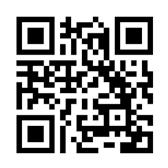





By Thomas Silva


SPEEDING THROUGH THE NIGHT at three in the morning, something felt different. I didn’t hear the usual whine of sirens which I used to switch on for emergency calls as an EMT, nor did I check in with Dispatch over the radio. This call was personal. My wife was seven months pregnant, and the premature birth of our baby was a terrifying reality.
Premature birth, like ours, is one of the many factors that can lead to postpartum depression (PPD) in fathers. While PPD is widely recognized in mothers, it affects approximately 10% of fathers as well. Understanding the causes, recognizing the symptoms, and seeking appropriate support can make a significant difference.
Our son was born at 3:30 a.m. on February 4, 2016. Weighing just over four pounds, he was the tiniest baby I had ever seen. Although he was perfect in every way, watching him being wheeled away to an incubator, covered in tubes and wires for life support, was devastating. Days turned into
nights, and nights into days, but my wife and I remained by our son’s side, leaving only for brief naps and meals.
The variation in communication and empathy among the medical staff was striking. Some staff members seemed irritated by our presence and questions, while others welcomed our involvement. They listened to our concerns, explained the treatment options, and encouraged us to participate in our son’s care. When a nurse allowed us to hold and feed our son for the first time, it was an indescribable joy.
Postpartum depression (PPD) in men can be influenced by various factors, including complications during pregnancy or birth, stress, lack of sleep, and a history of mental health issues. The risk of PPD increases significantly—by up to five times—if their partner is also experiencing PPD.
While women with PPD may show symptoms like crying, loss of interest, and feelings of guilt, men often exhibit different
signs. Common indicators in men include anger, risk-taking behaviors, emotional detachment, and escapism through excessive work or substance use.
It’s not unusual for someone other than the father to first notice these struggles and encourage him to seek help. Recognizing these differences in symptoms is crucial for timely support and intervention.
The consequences of not seeking help for postpartum depression can be profound. Men are four times more likely to die by suicide than women, highlighting the serious implications of untreated mental health issues. Furthermore, a father’s mental health significantly impacts his children’s development. Research shows that children of depressed fathers during their first year are at a higher risk for behavioral and developmental challenges in kindergarten.
The first step in preventing PPD in men is to provide strong support to their wives.
Fostering teamwork before the birth and ensuring that she has the time to rest and receive support during the first six weeks postpartum is crucial. Additionally, having a doula present during childbirth can reduce the risk of PPD by nearly 64%.
Several lifestyle changes and practices can help support men with PPD both on a psychiatric and cellular level:
• Fasting: This practice can stimulate autophagy and may also help improve mood and reduce symptoms of depression.
• Exercise: Regular physical activity not only enhances autophagy but is also well-documented for its positive effects on mental health, including reducing symptoms of PPD.
• Quality Sleep: The majority of cell recycling occurs while we sleep. Adequate sleep is crucial for mental health and can enhance autophagy.
• Nutrient Modulation: Compounds like curcumin (found in turmeric) have potential mood-enhancing properties and can promote autophagy.
• Cold Exposure: Cold showers, ice baths, or exposure to cold temperatures can promote autophagy.
• Heat Therapy: Using saunas can also encourage autophagy by inducing heat shock proteins.
Nutritional Supplementation:
The following supplements reduce depressive symptoms but also increase the rate of recycling of old and dead cells known as autophagy.
• Omega-3 Fatty Acids: Omega 3’s have anti-inflammatory properties, which can reduce neuroinflammation—a factor often associated with depression. Omega-3s support the brain’s ability to clear out damaged or dysfunctional components, aiding in mental health recovery.
• Vitamin D: A systematic review indicated that vitamin D supplementation can lead to notable improvements in mood. Research suggests that vitamin D can enhance autophagy in various cell types by activating certain signaling pathways, particularly the mTOR pathway, which regulates cell growth and metabolism.

• B Vitamins: B vitamins are essential for synthesizing neurotransmitters like serotonin and dopamine, which can influence mood and cognitive function. B vitamins support autophagy through their roles in energy production, nucleotide synthesis, gene regulation, oxidative stress reduction, and neurotransmitter synthesis.
In the months following my son’s birth, both my wife and I had our share of dark days. Immersing myself in my work in medicine, recounting our NICU experience, as well as the recommendations above, became a vital part of processing the challenges we had faced. This journey transformed my perspective on healthcare and inspired my pursuit of becoming a Physician Assistant (PA) with a focus on mental health. This experience helped me understand the critical importance of compassionate care and listening. It has been an honor to support patients through traumas and psychiatric challenges.
If you or someone you care about is facing mental health challenges, consider contacting Denova Healthcare for virtual or in-person services in primary care, therapy, and psychiatry—often available within 24 hours. Therapy can provide essential support and coping strategies, while psychiatry helps determine when medication may be necessary. Additionally, primary care is crucial for postpartum health, ensuring ongoing well-being. Taking this step is vital for recovery.
Dr. Fong, a long-time provider at Denova and a prominent advocate for mental health in Arizona, emphasizes that “Asking for help doesn’t indicate a problem; it shows your commitment to being the best father and husband you can be!”
Thomas Silva is a Physician Assistant at Denova Collaborative health. His special interests include complex cases, nutritional psychiatry, and supporting fellow dads on their fatherhood journey. He is motivated by the bonds he has with his patients, and loves to see them heal their marriages, recover their jobs, and reclaim their enjoyment of life.

By Monique Seleen
DADS - GET READY to be the most involved and informed birthing partner after participating in Birth Connection’s Daddy Doula course.
This condensed childbirth education class offers both the mother and birth partner to learn the fundamental parts of labor and birth including :
• Anatomy
• Phases of labor
• Hormones in labor
• Birth plans
• Strategies to calm the nervous system
• Massage techniques
• Cesarean support
• Variations of “normal”
• Advocacy
• Labor positions
• Medical and natural pain management options,
• Prepping your body
• How to use tools such as a birth ball, peanut ball, TENS machine, rebozo and more.
Unlike a traditional childbirth education class, the Daddy Doula course places an emphasis on partner support and hands on and interactive practice.
Couples leave this class with:
• A massage tool that the founding doulas use at almost every birth
• 2 labor combs
• A set of affirmation cards
• One 1ml bottle of essential oil of your choice to use for nausea in labor
• One 2 ml bottle of essential oil of your choice to diffuse during labor
• One 2 ml roller bottle of a favorite essential oil for labor
• A workbook with detailed instructions and notes
• An editable copy of a birth plan
• A hospital bag checklist
• A resource list of favorite pregnancy and birth professionals
Nicole (“Coco”) Denham and Esther Grubbs, doulas and founders of Birth Connection, are passionate about educating dads and partners in the birthing process and empowering them to actively support the birthing woman both physically and emotionally.
“When dads/partners are informed about labor stages, hormones in labor, medical and non-medical pain management options, and communication with medical
professionals, they can become confident advocates and nurturing companions during this transformative experience,” said Esther. “This education can reduce stress for both the laboring woman and her companion and enhance the incredible bond that takes place when a child is born.”
Birth Connection designed the Daddy Doula course after learning the many benefits that a supportive and hands-on dad or partner can have including a more connected birth experience, as well as physical and medical benefits.
The main goal of the Daddy Doula course is to foster connection. “Early parenthood is so difficult and requires so much support for both parents,” said Esther. “This class gives partners confidence, knowledge and hands-on tools so they have the most connected and bonding birth experience and enter parenthood with a strong sense of partnership and mutual support.”
The Daddy Doula course is offered on Tuesday and Thursday evenings and Saturday during the day, and usually runs 1-3 times per month.
For more information or to sign up for the course, visit birthconnectionaz.com








At American Leadership Academy, we combine academic excellence and character development to create an exceptional educational experience. Our students are prepared not only to be great students today, but also great leaders tomorrow.
A-rated Cognia accredited academics in a moral & wholesome environment
Quality pre-k program
State-of-the-art athletic facilities
Full K-12 experience including athletics, fine arts, and before & after-school programs
Entrepreneurship & Dave Ramsey